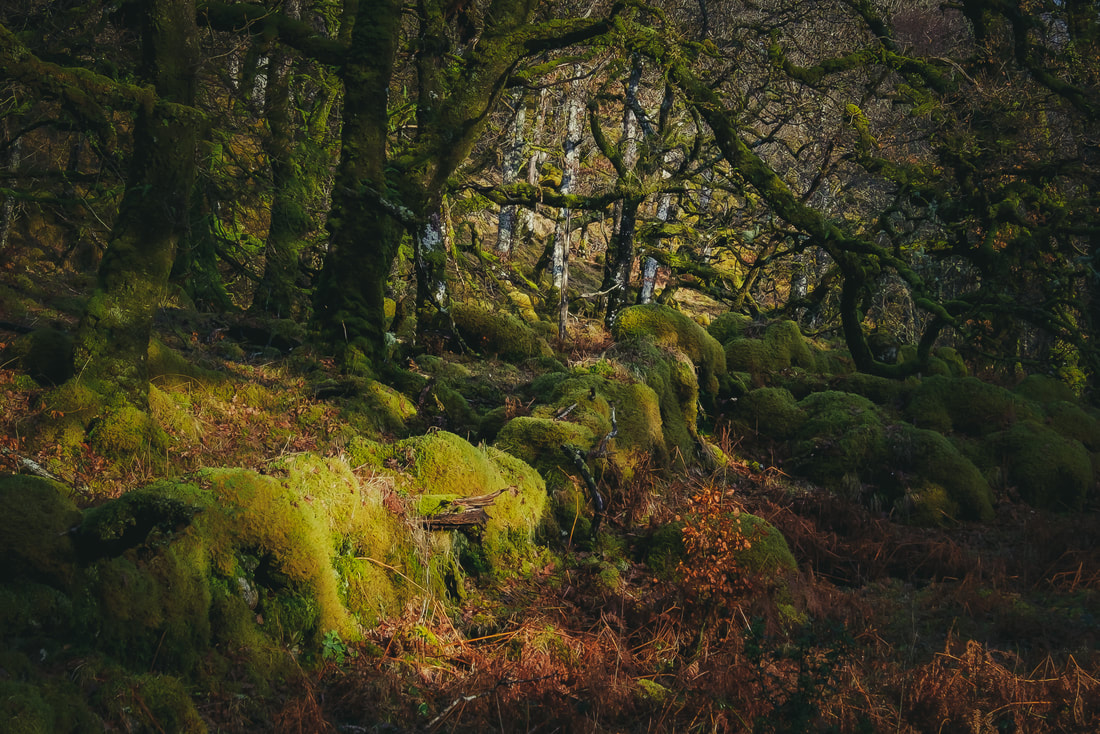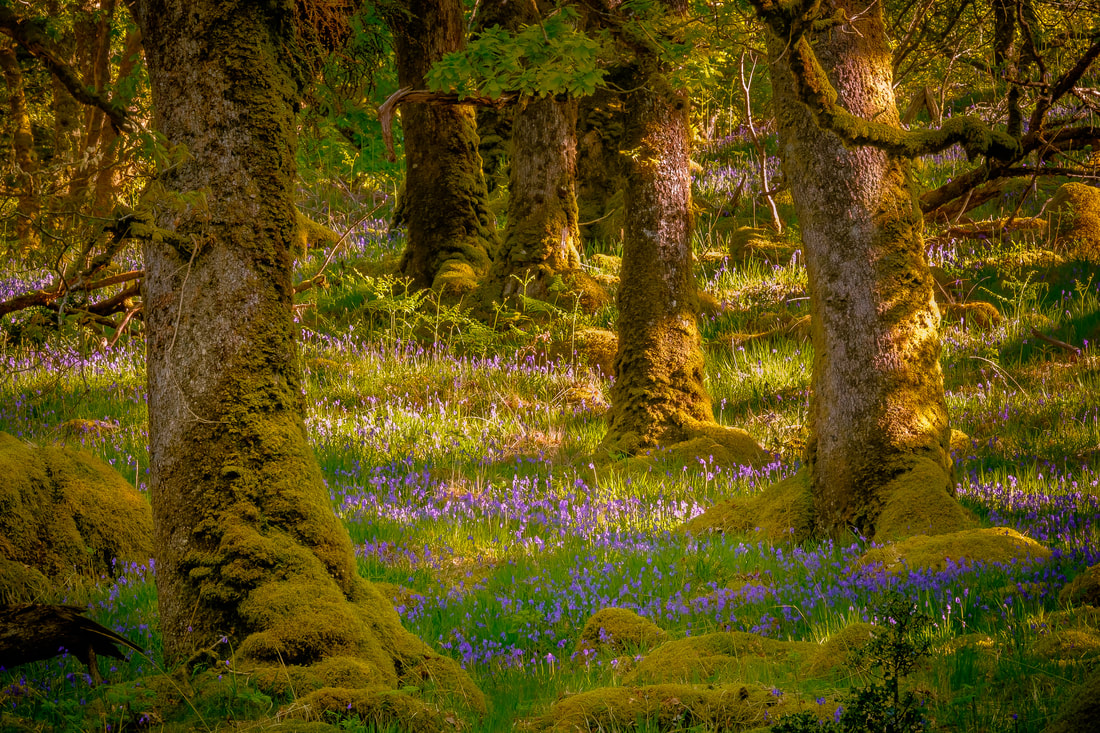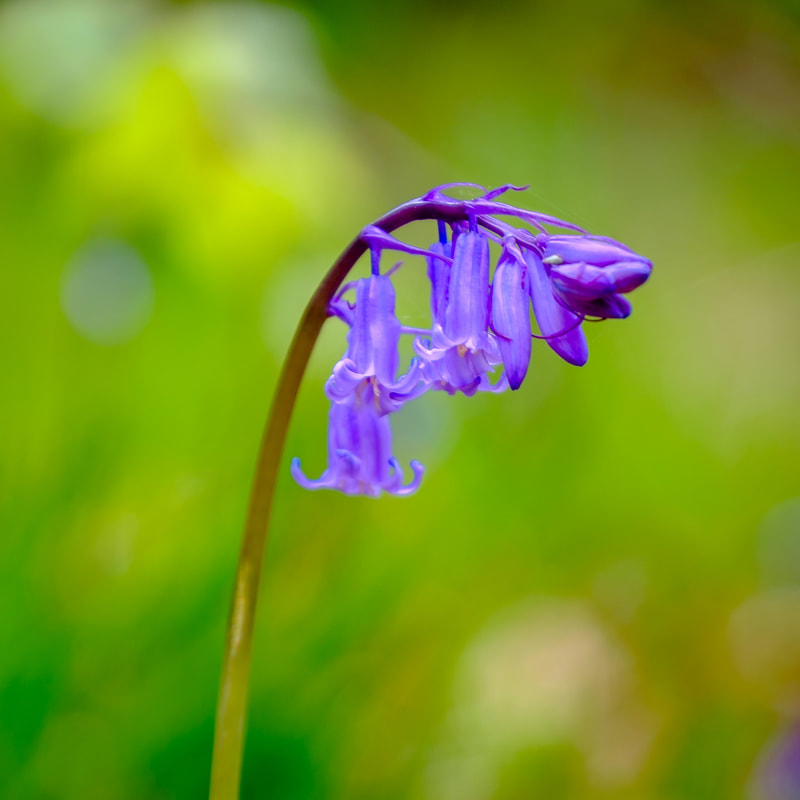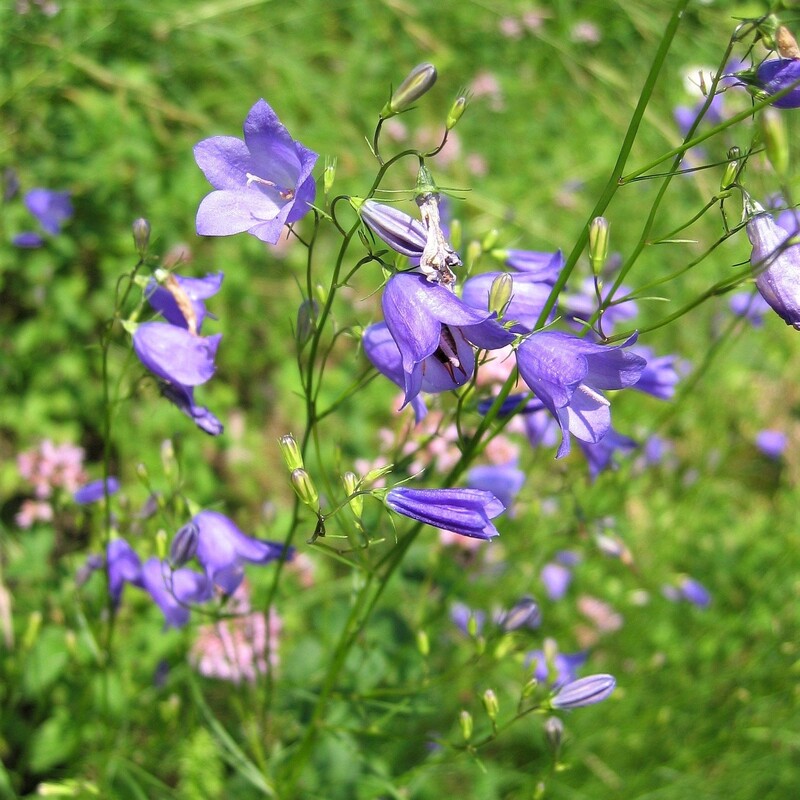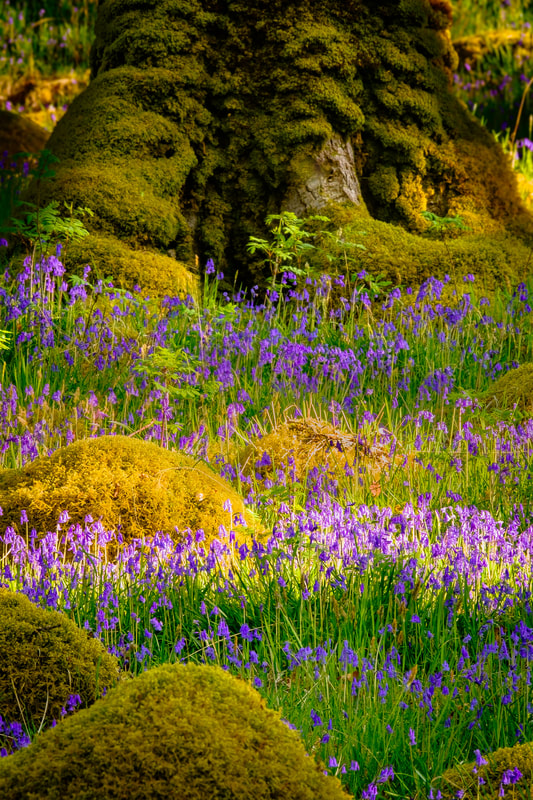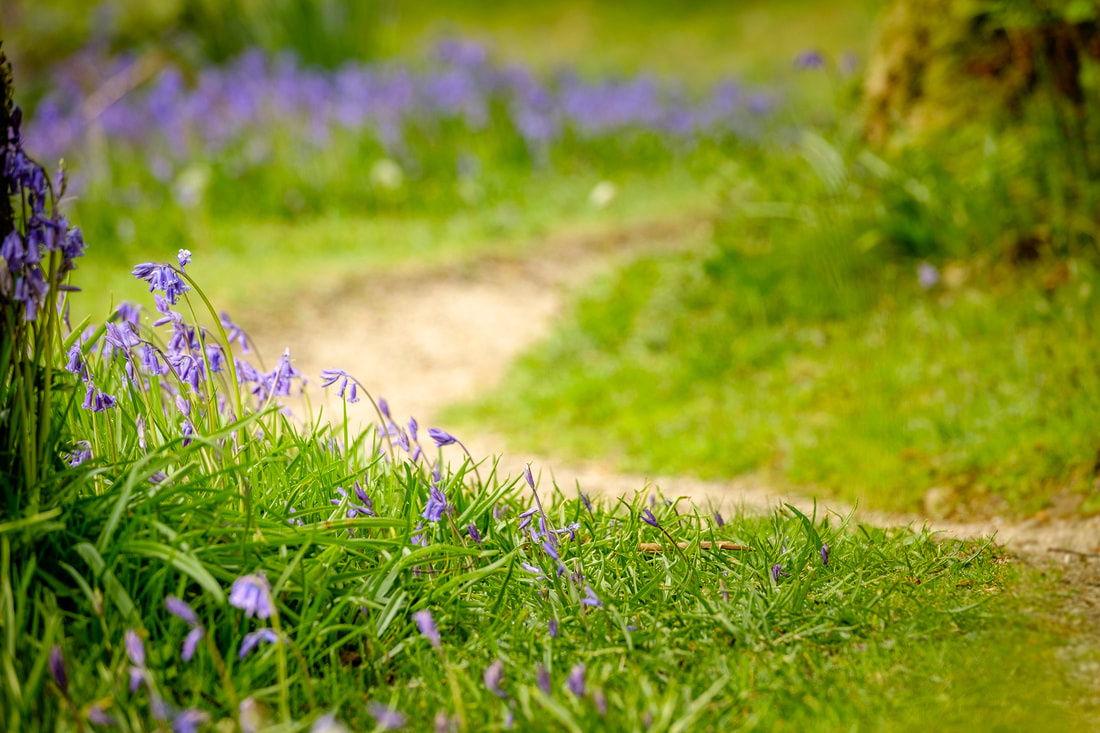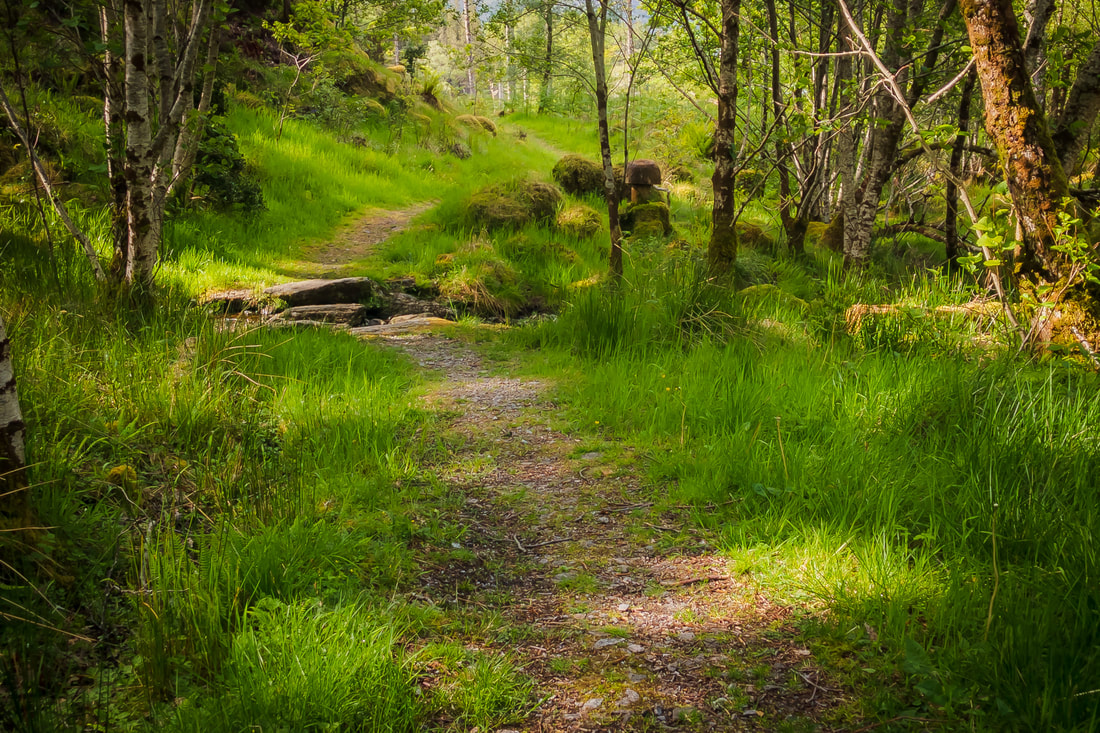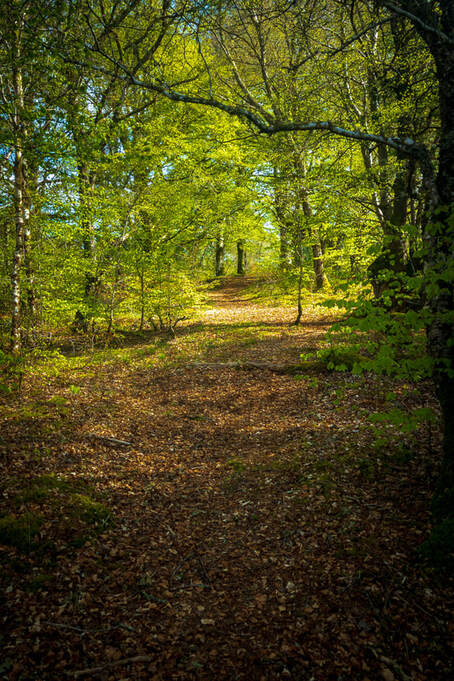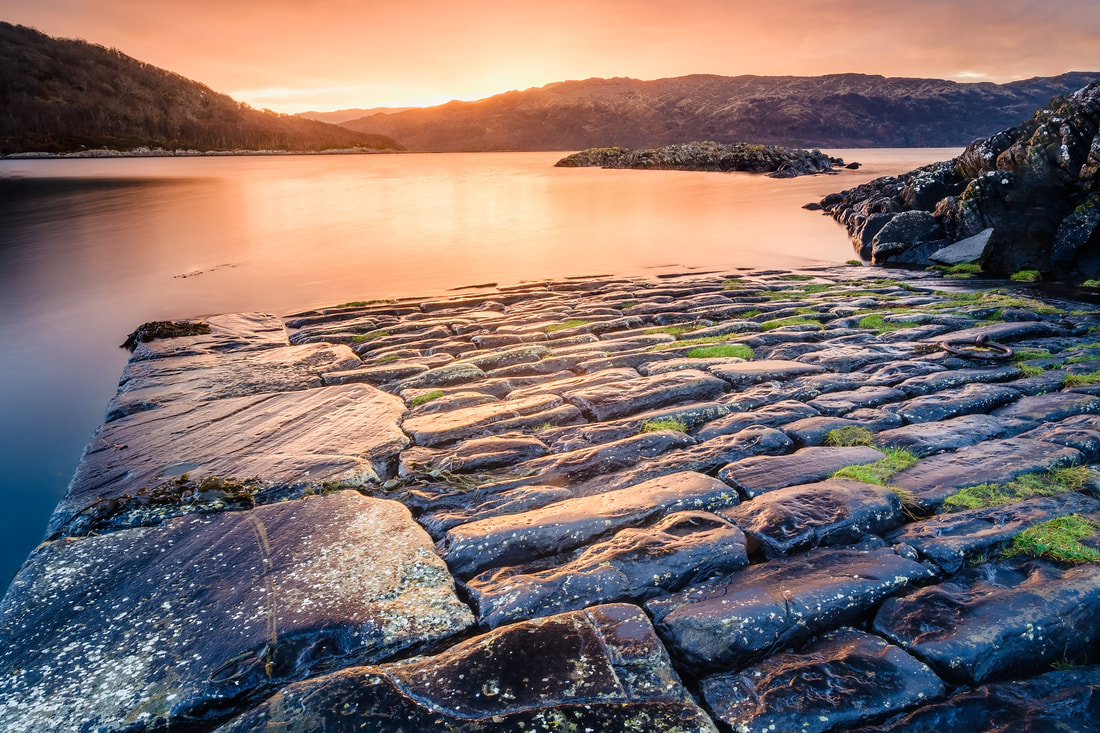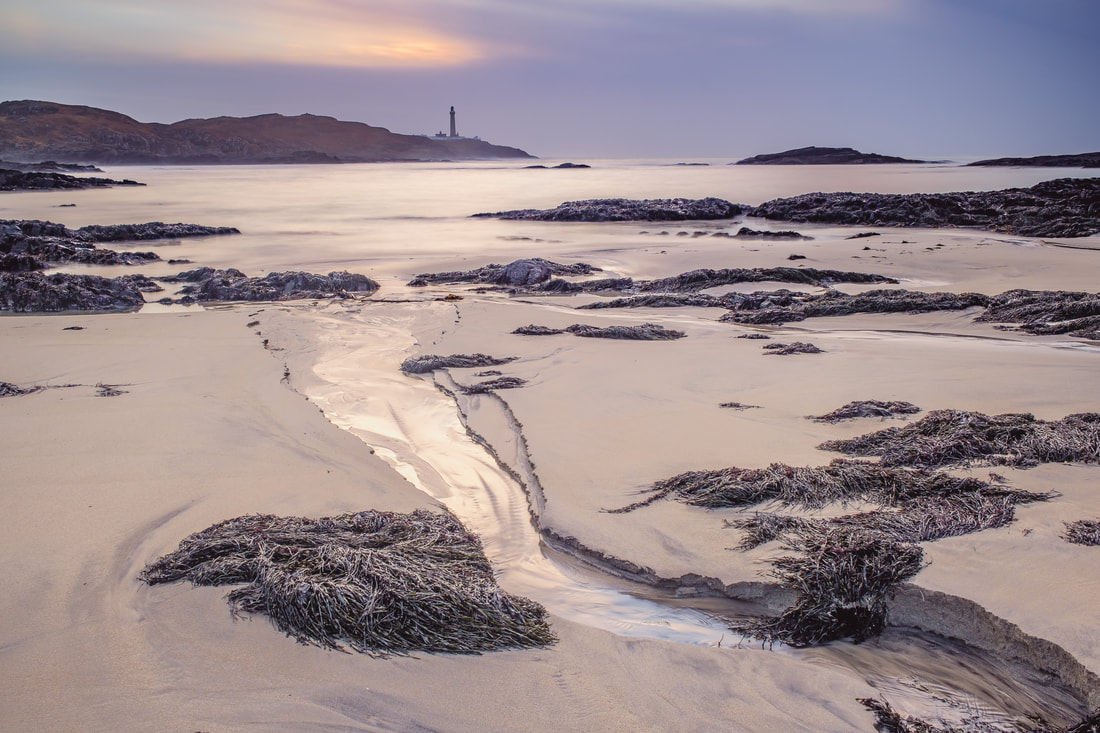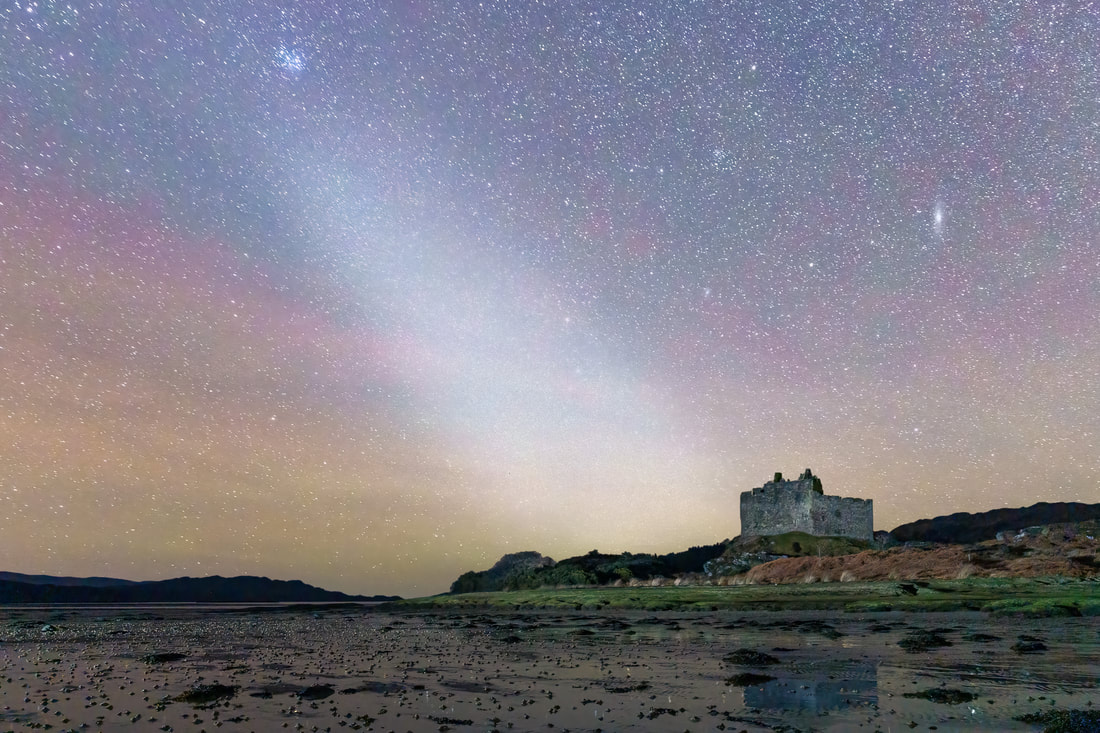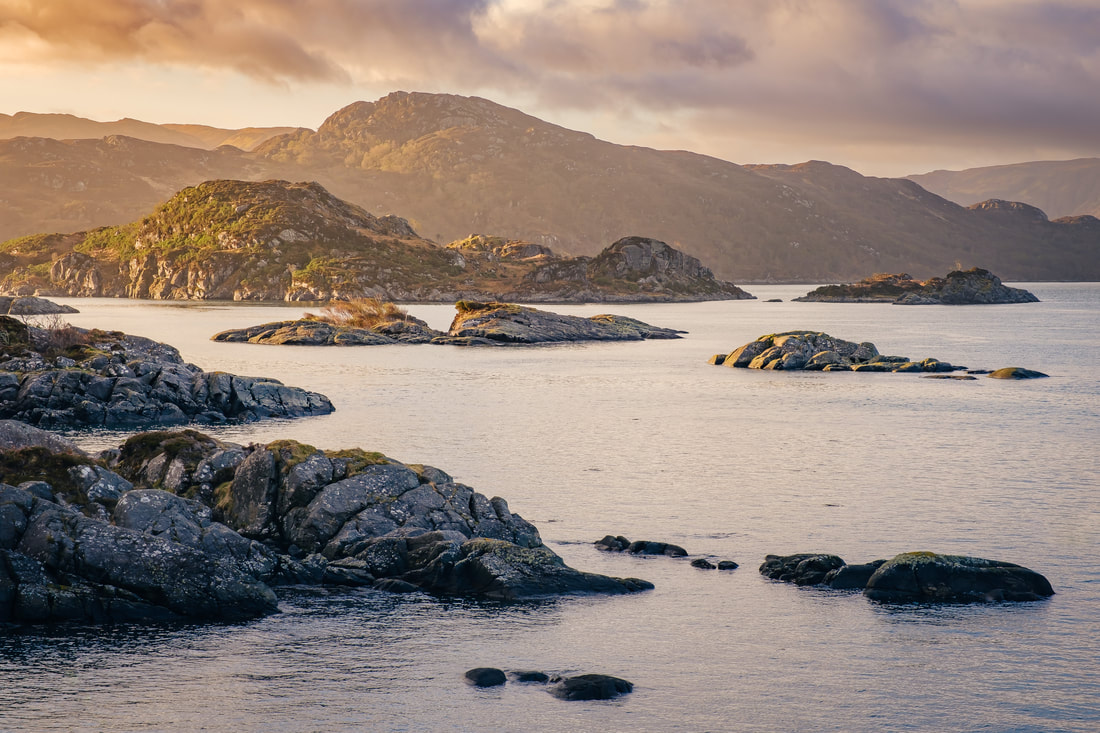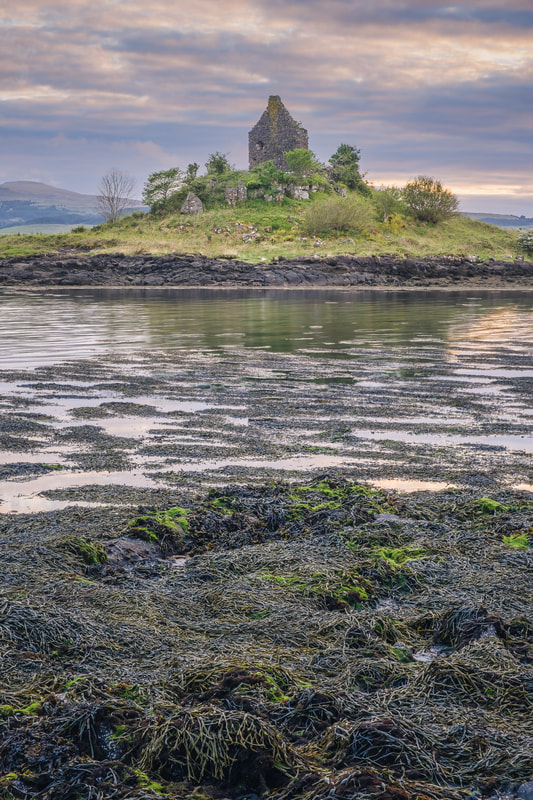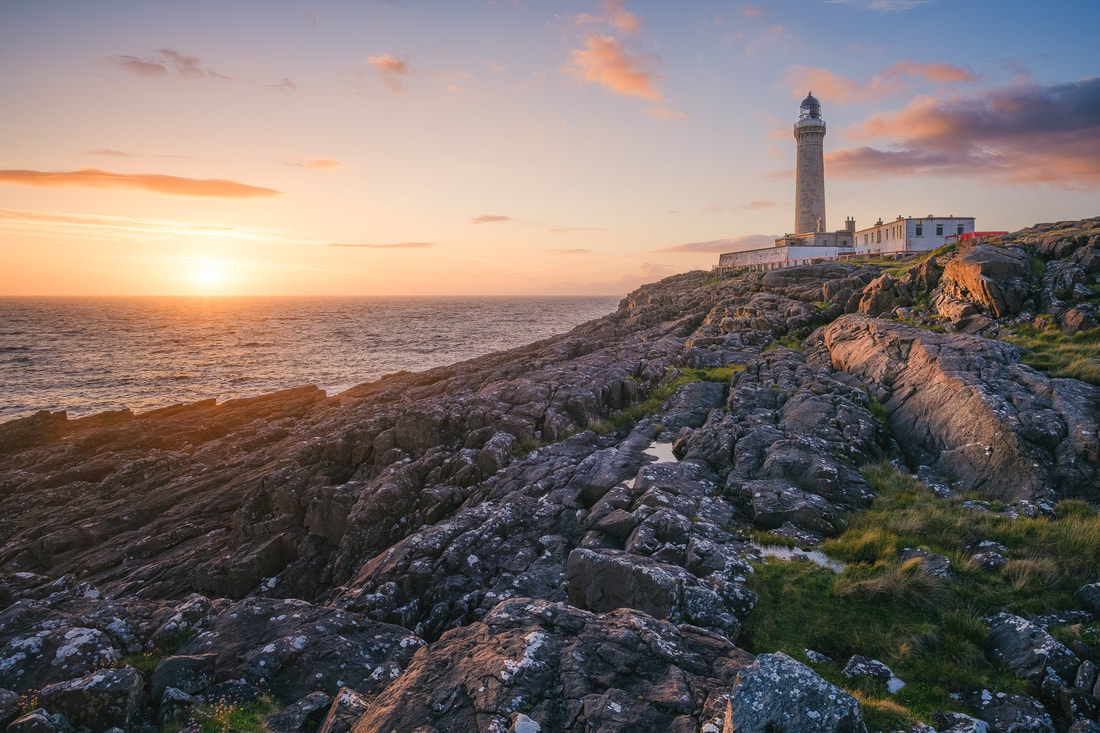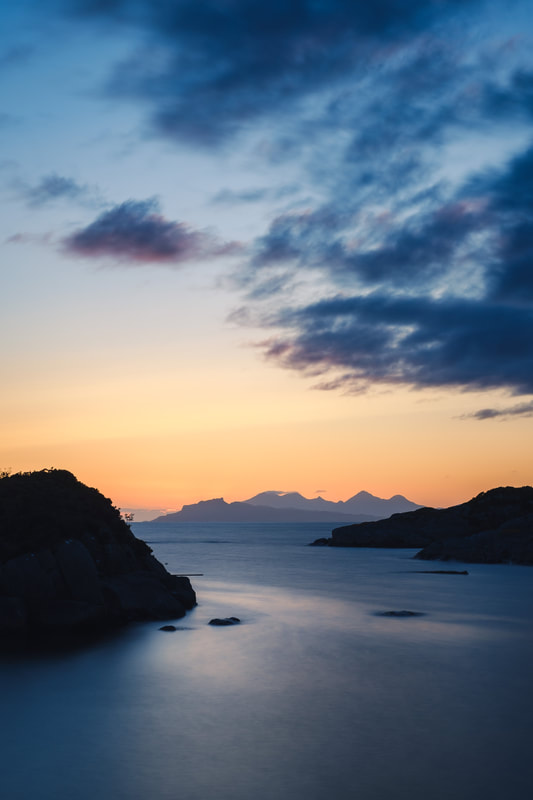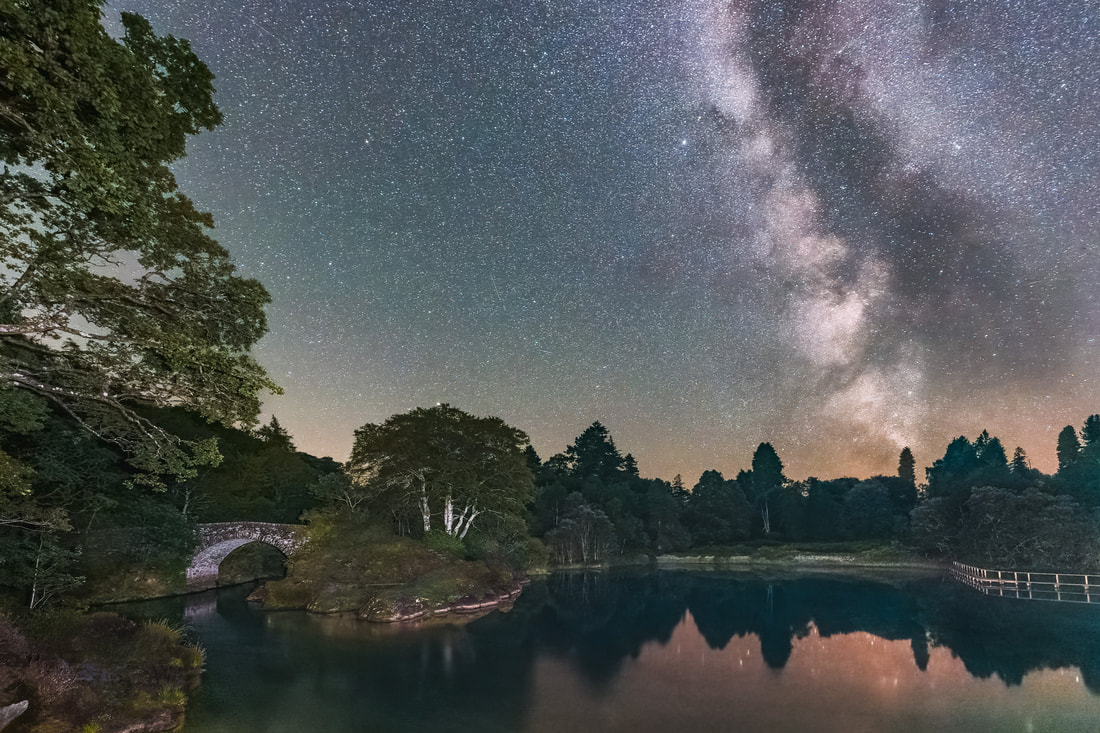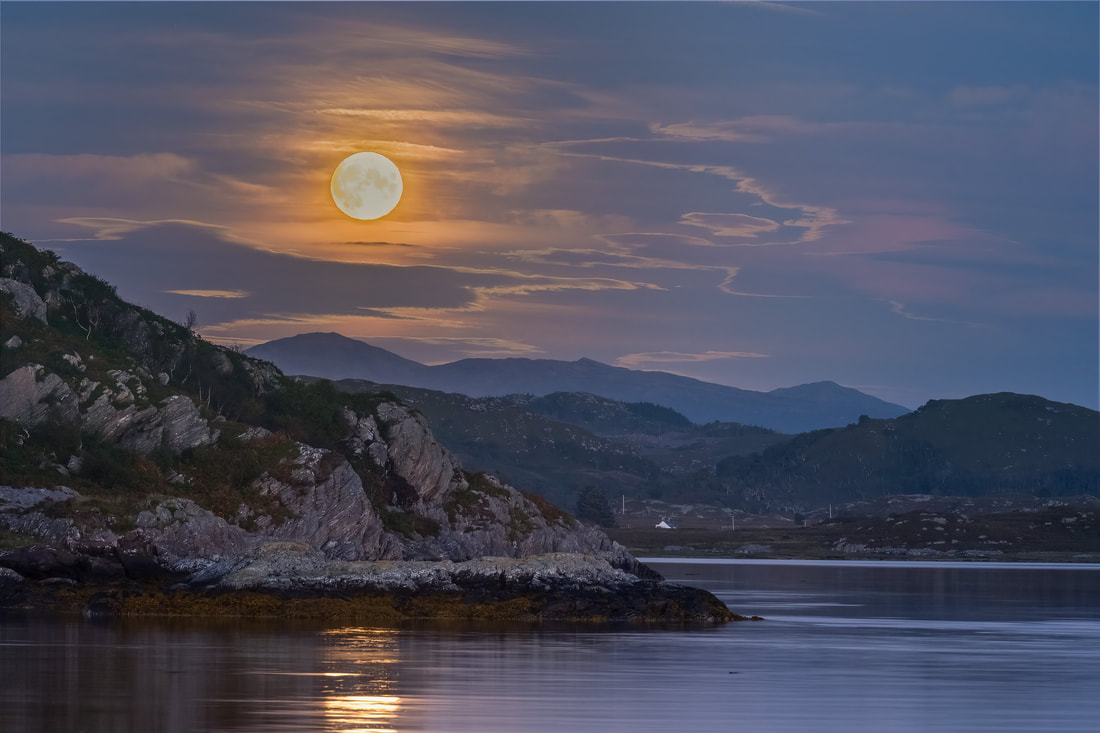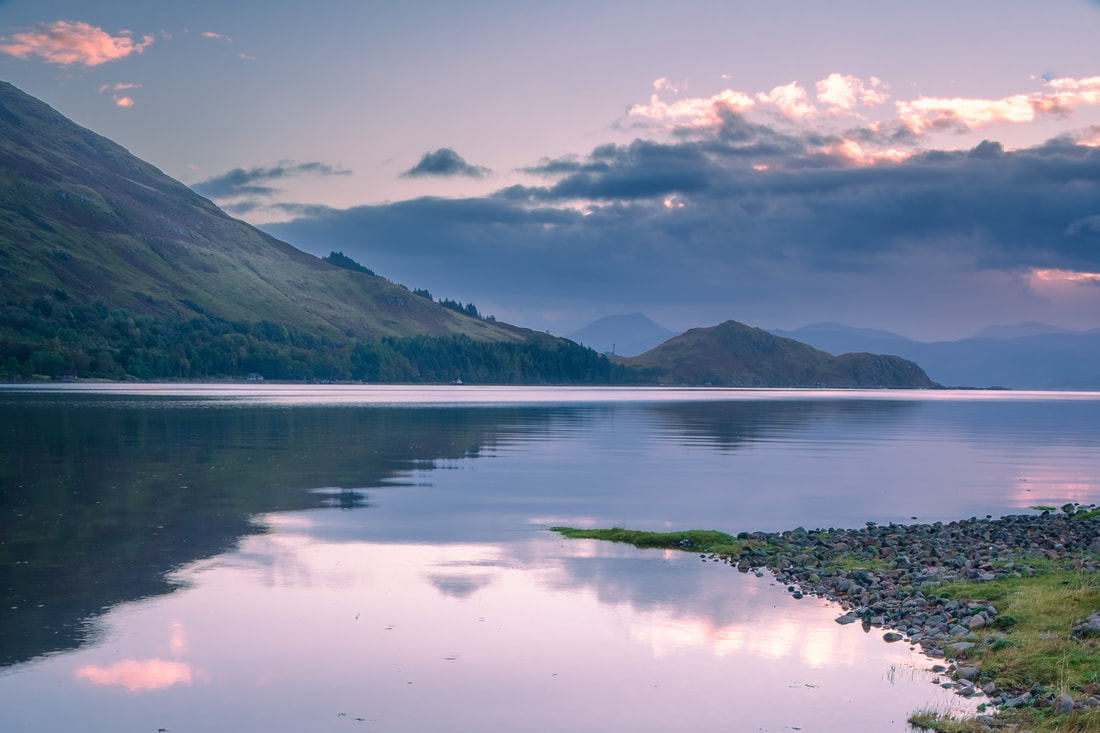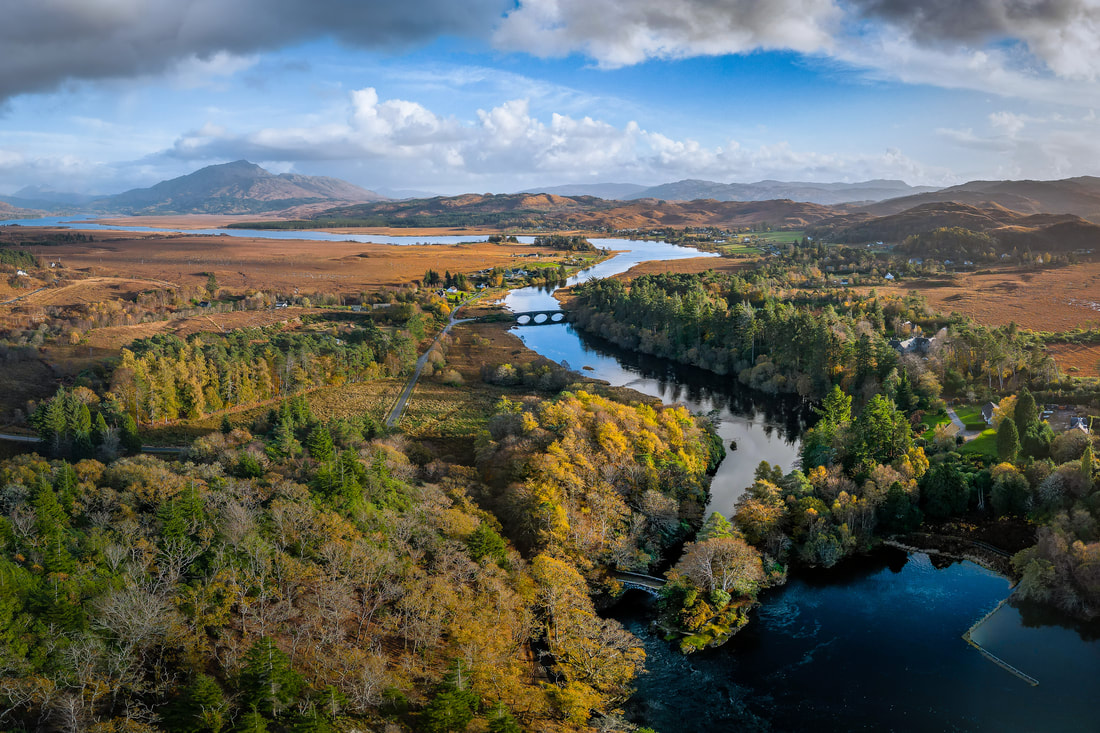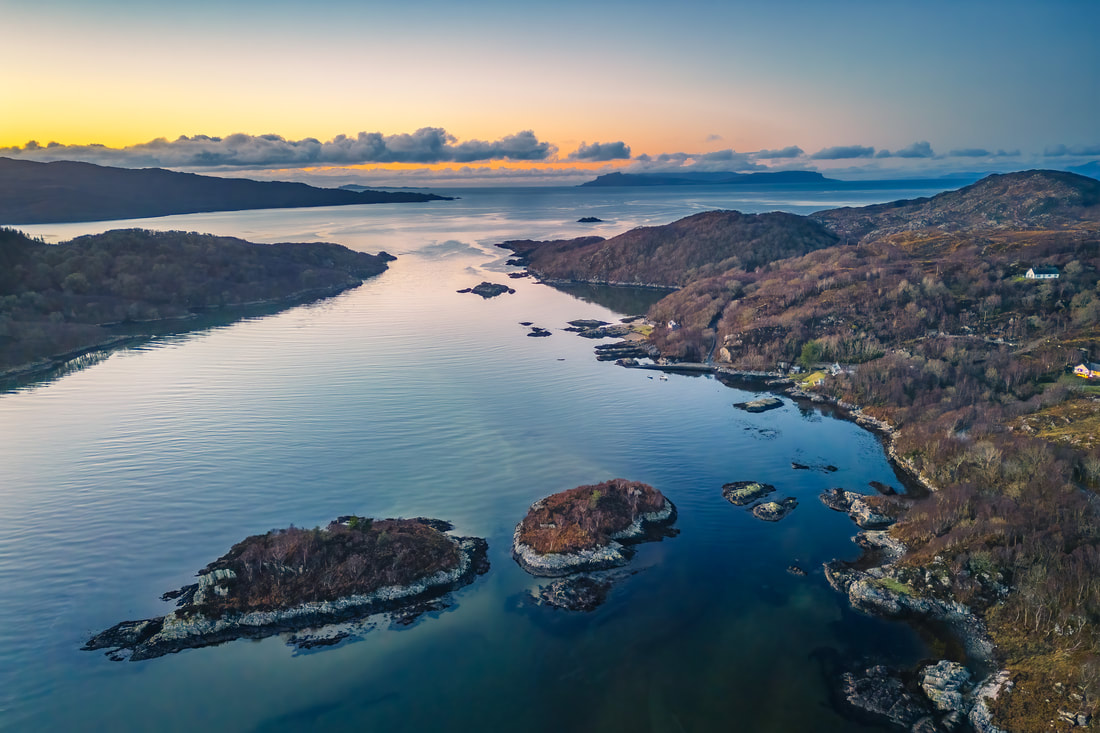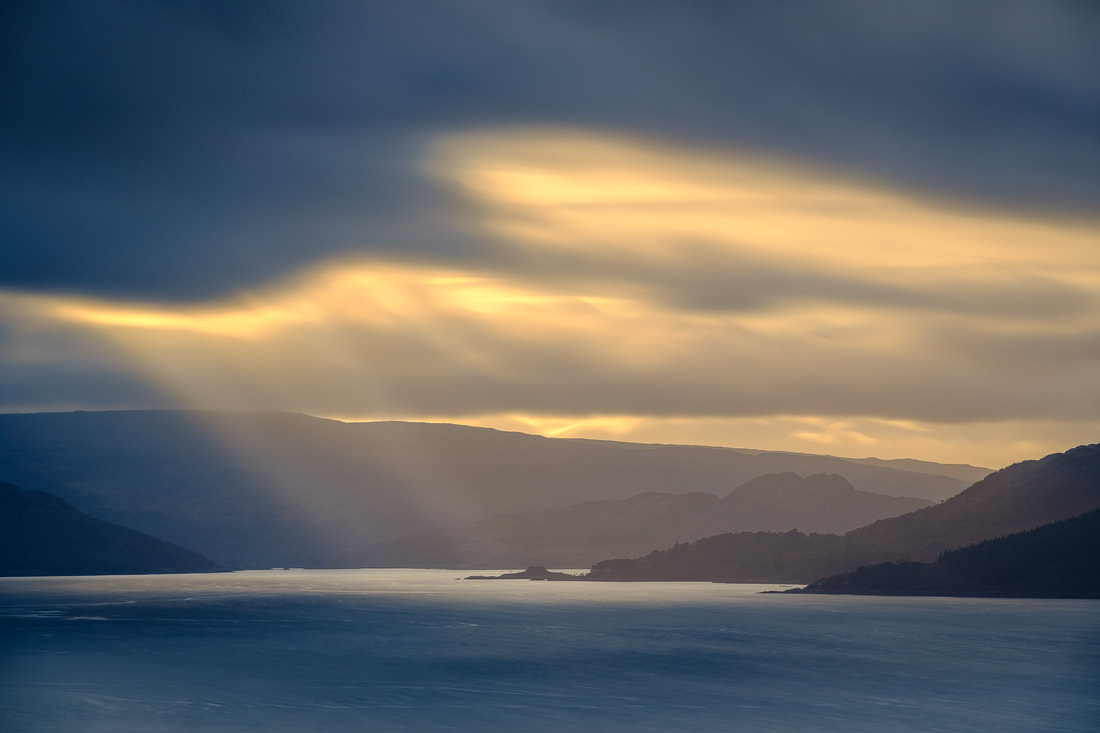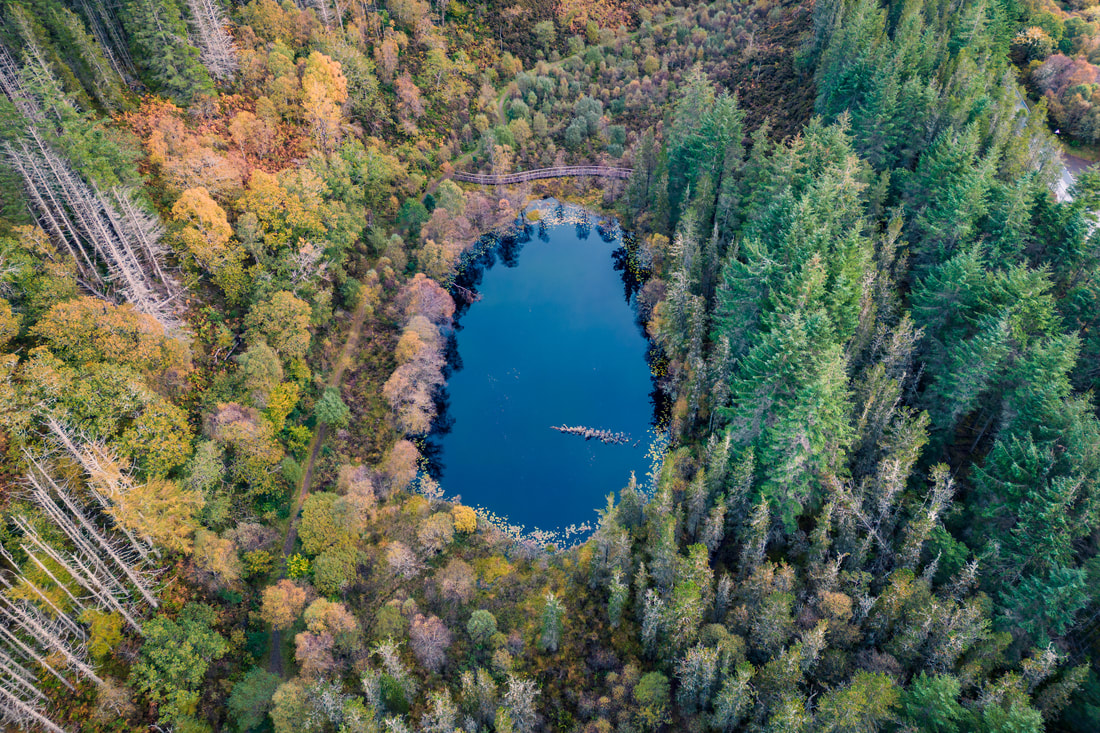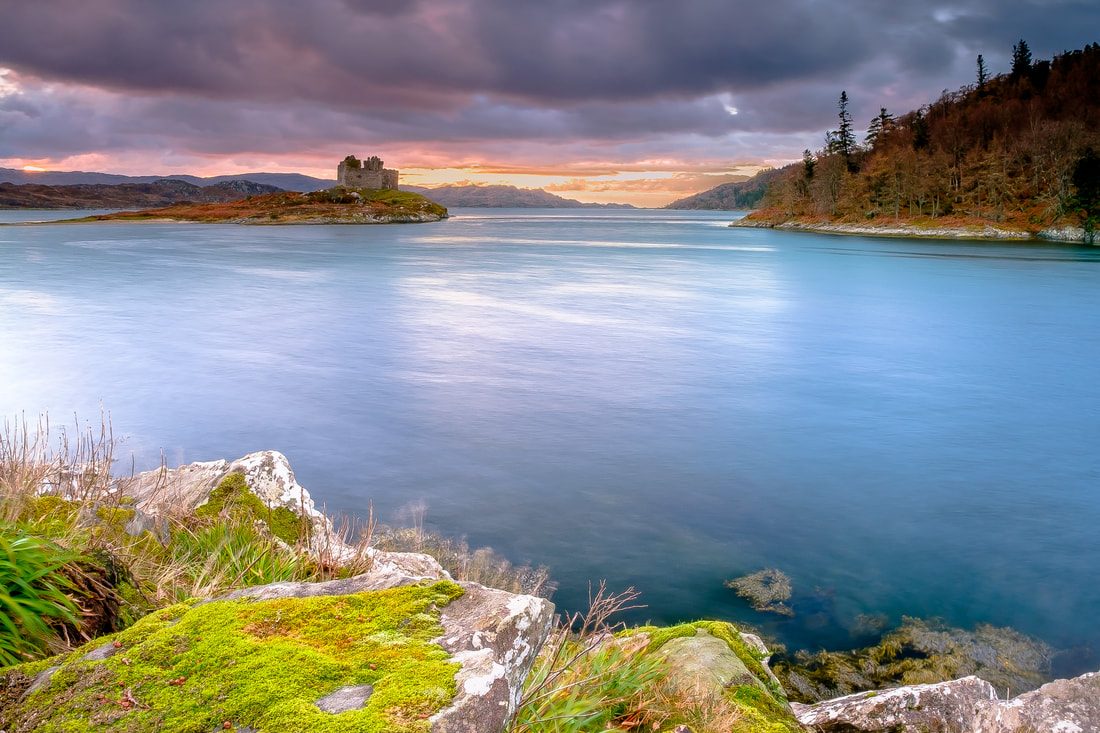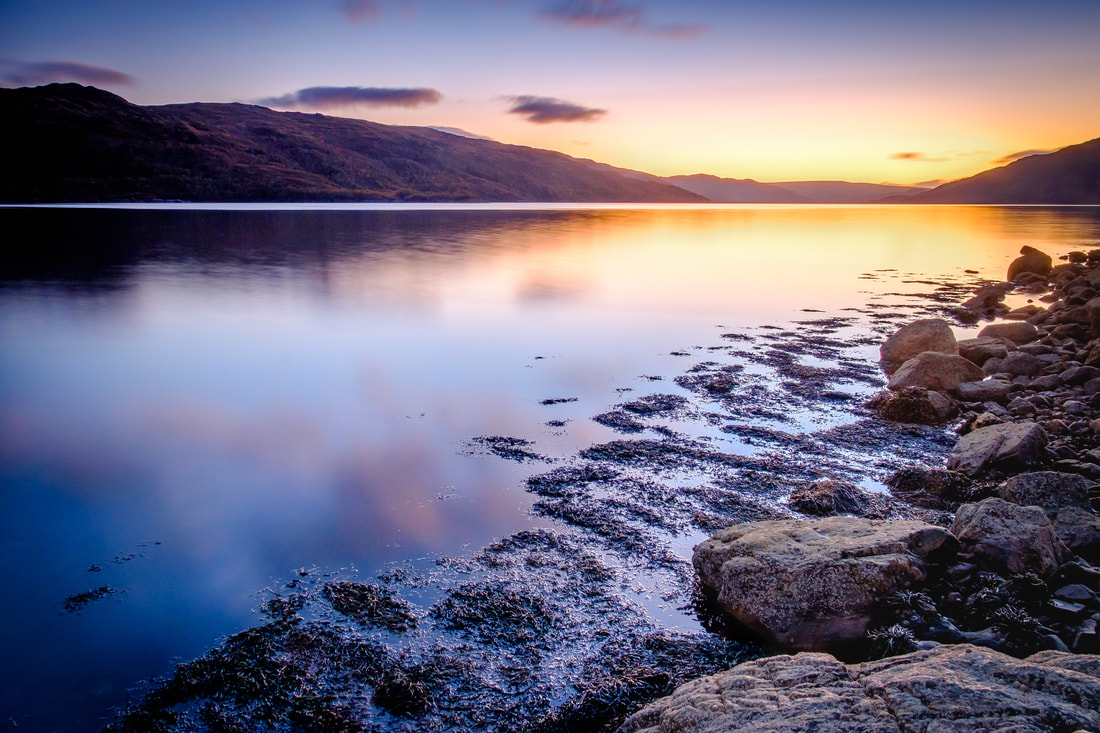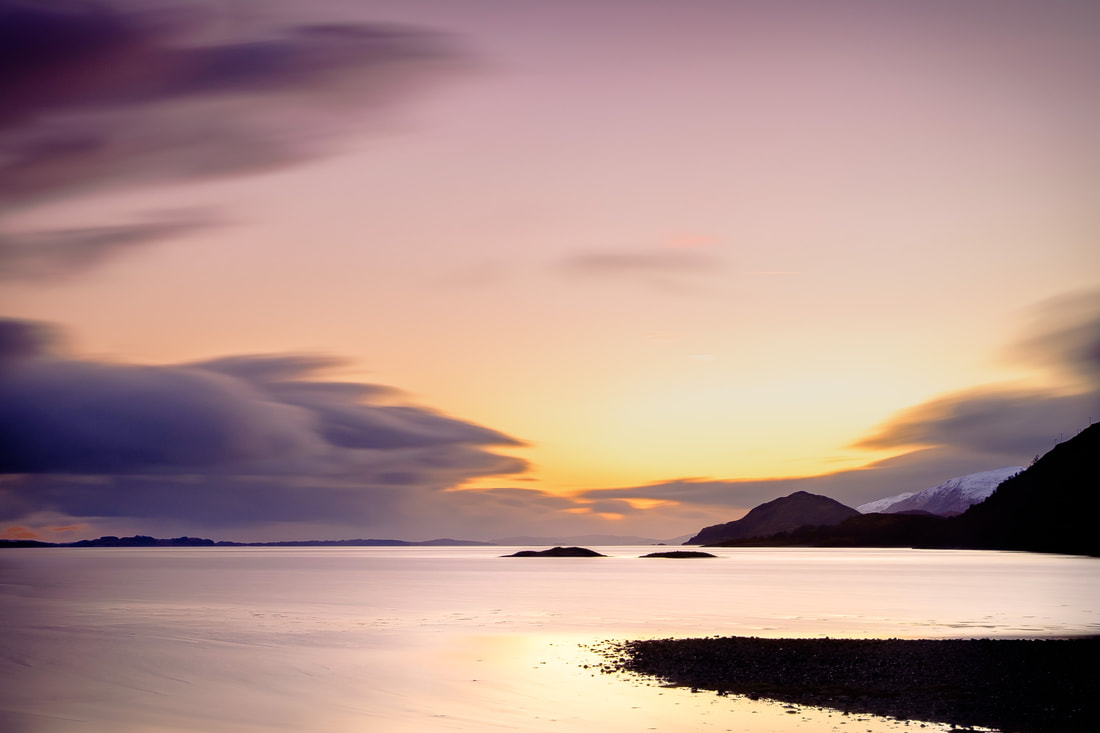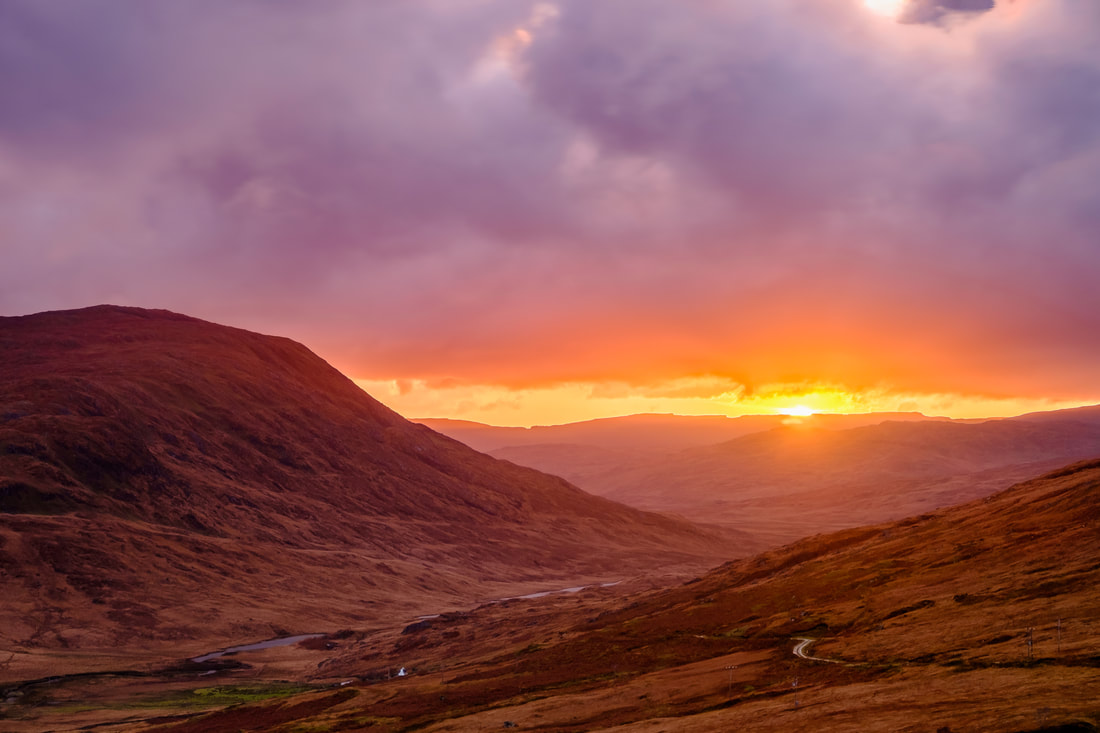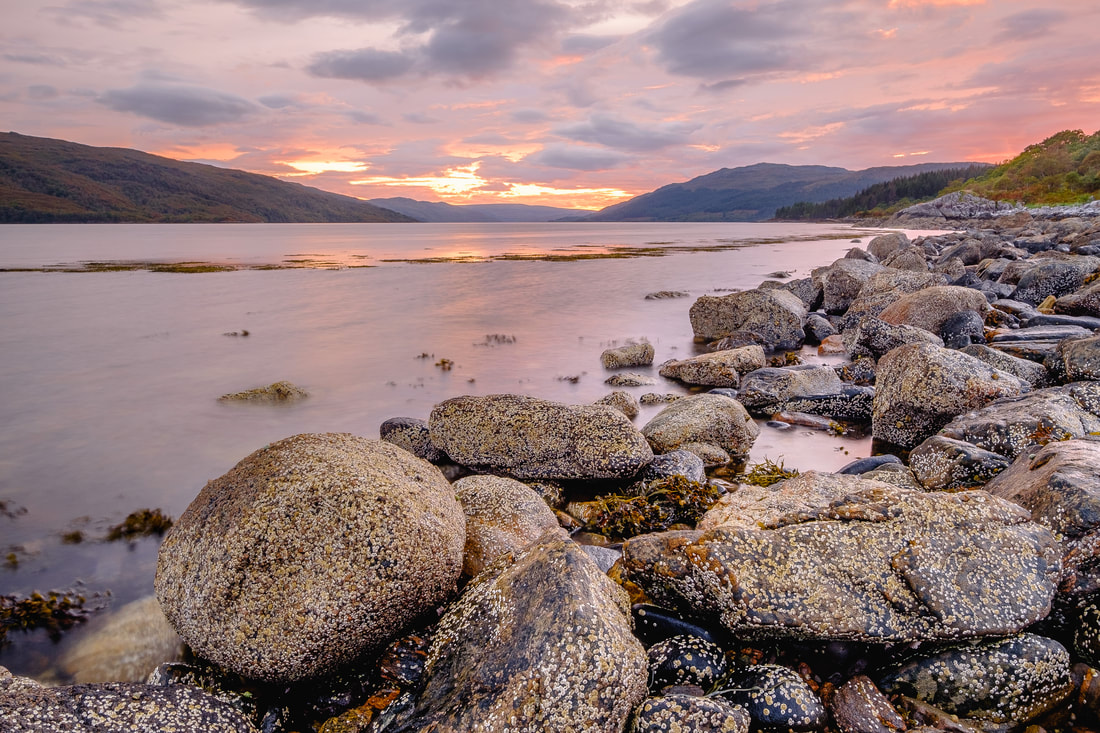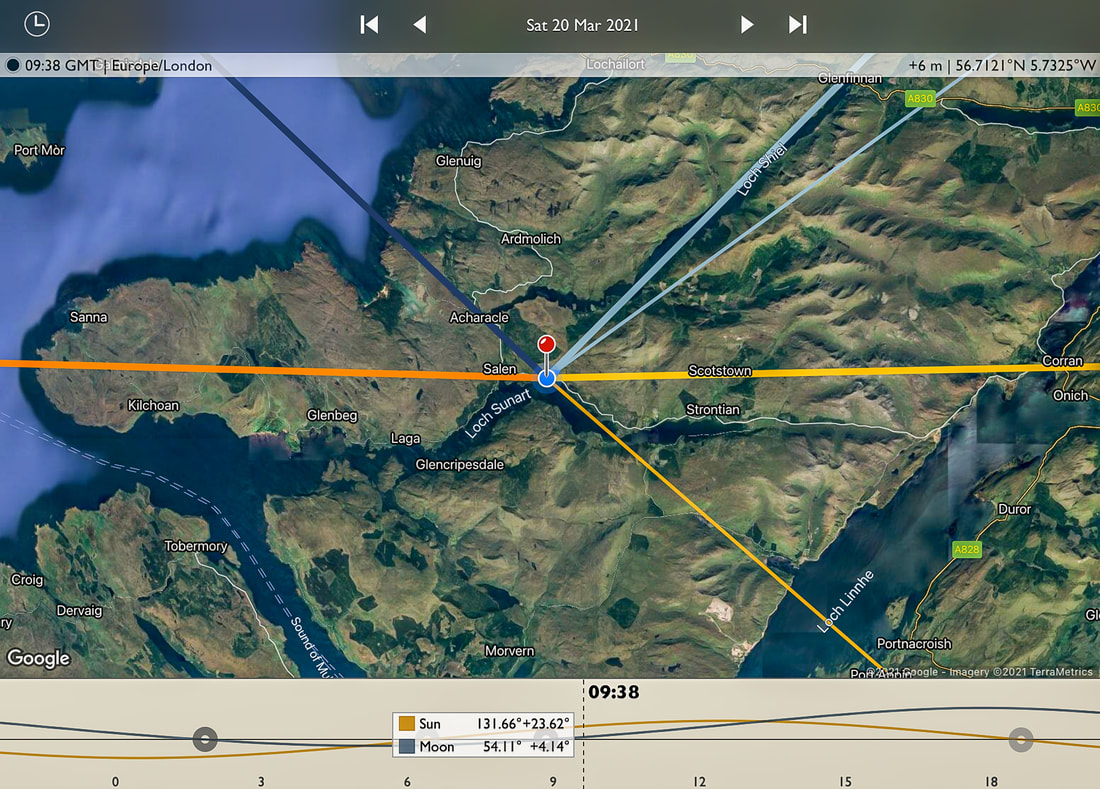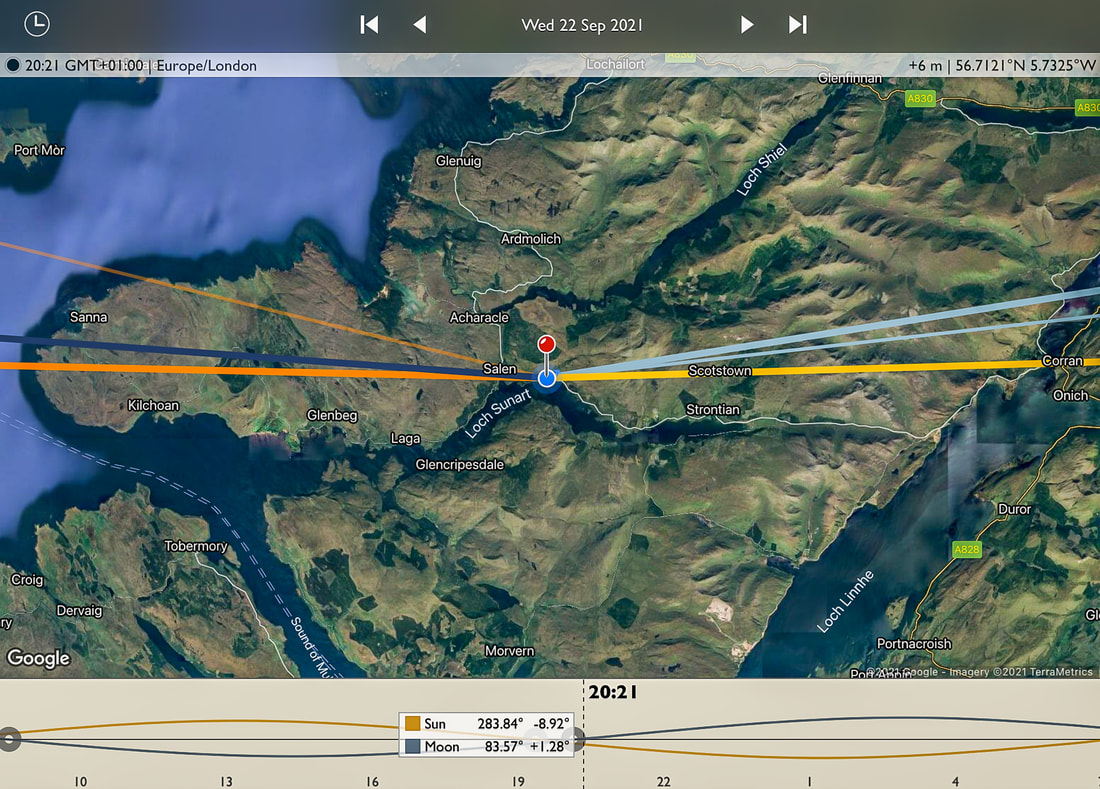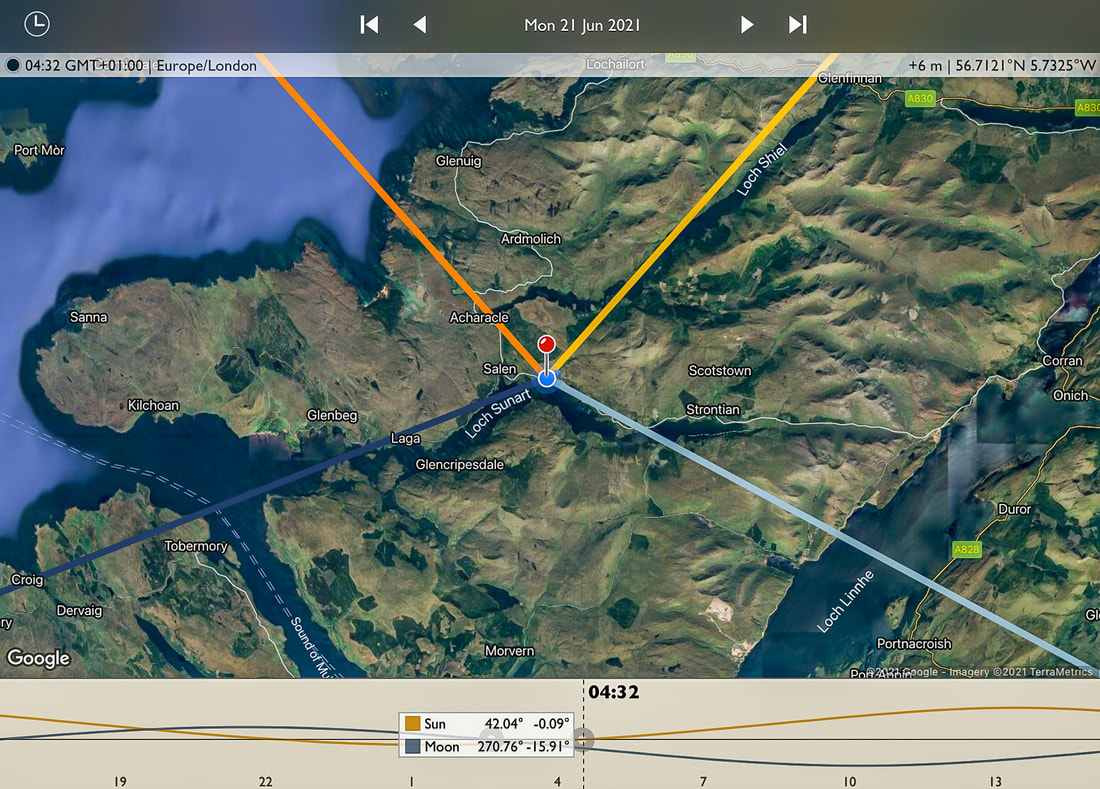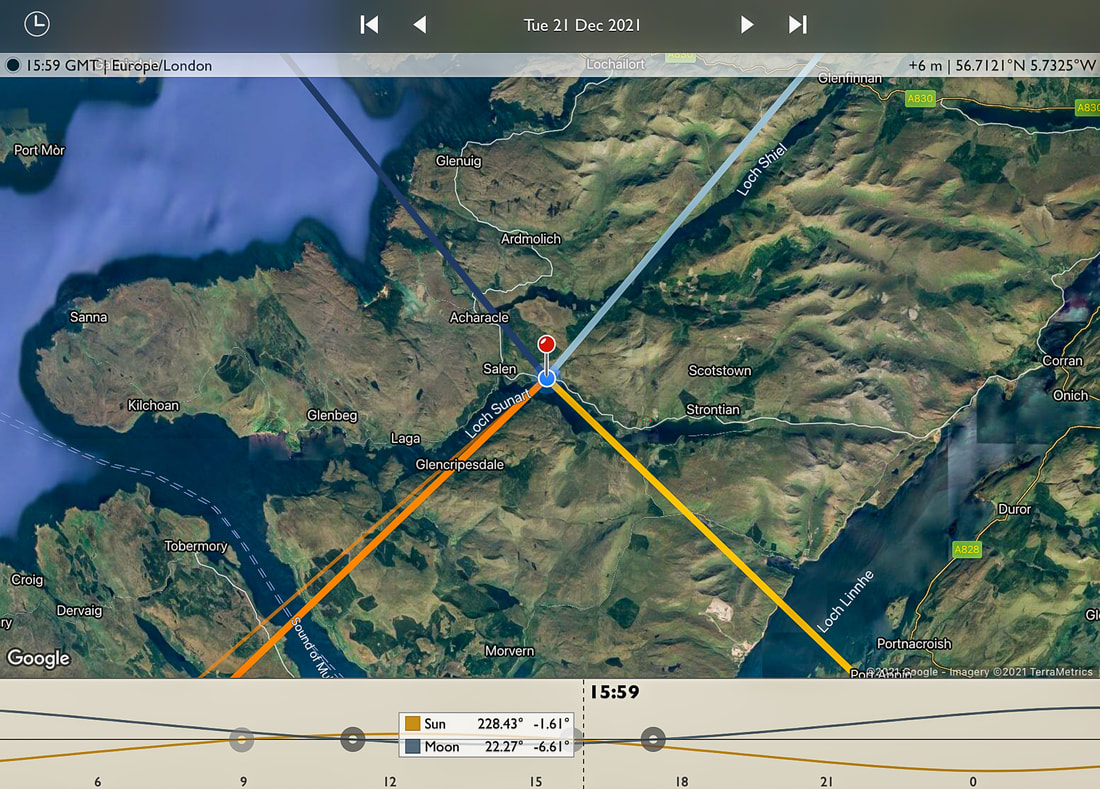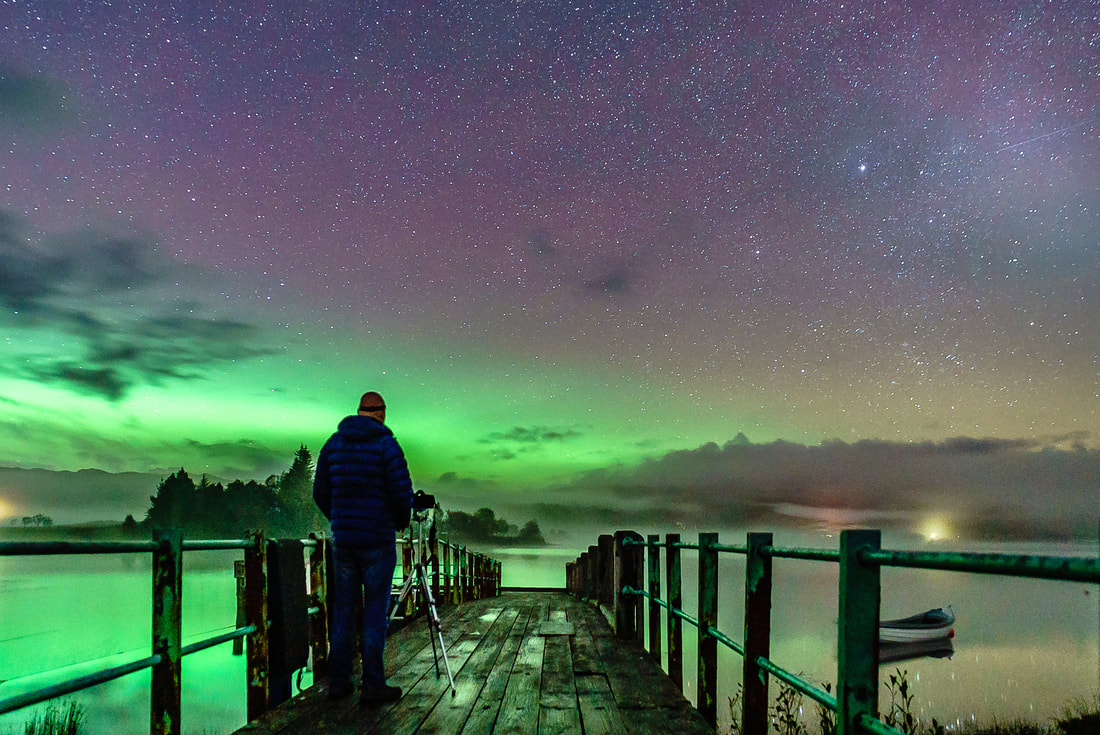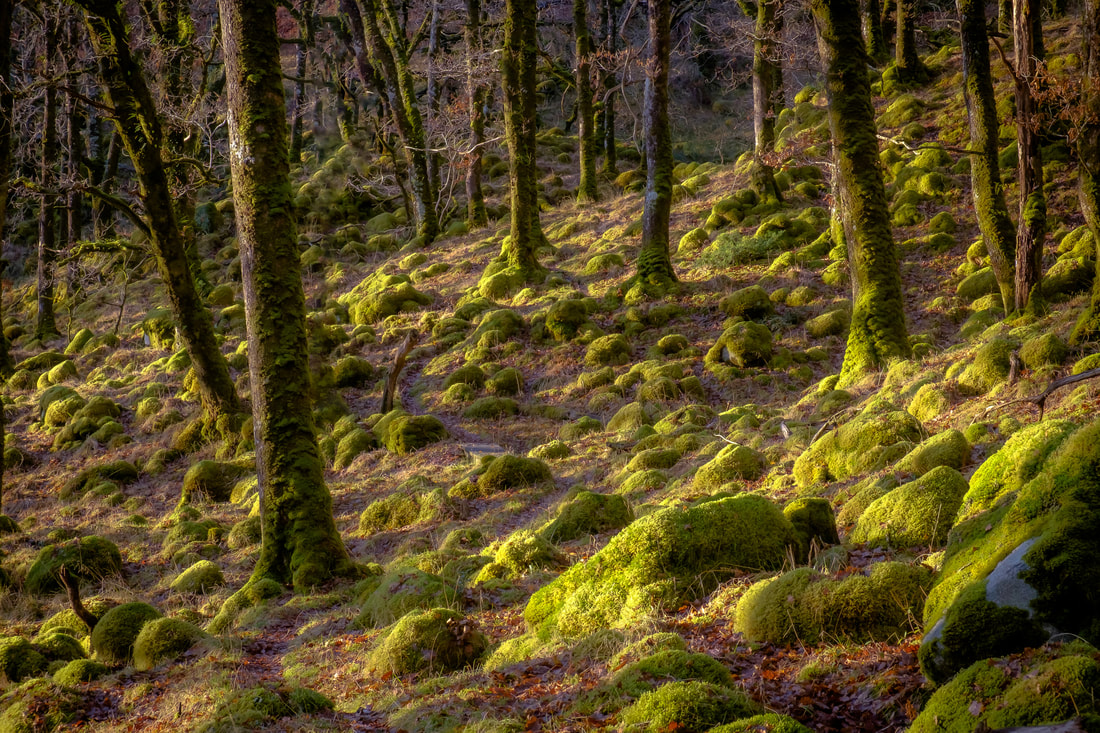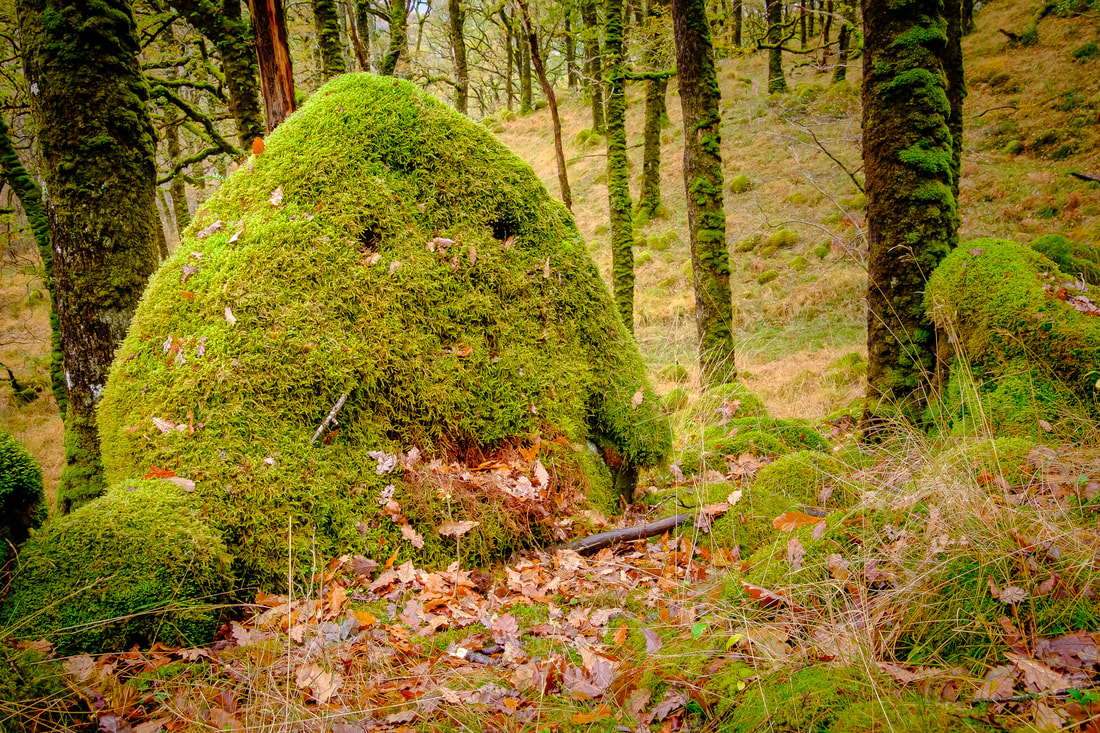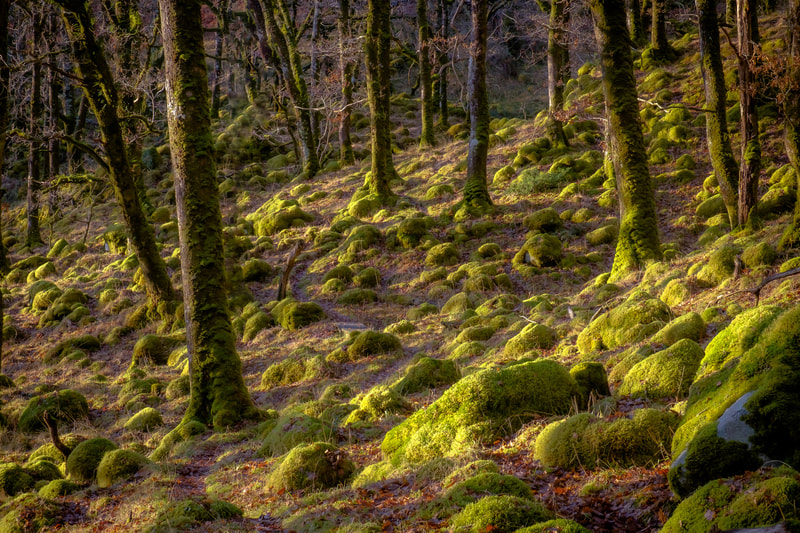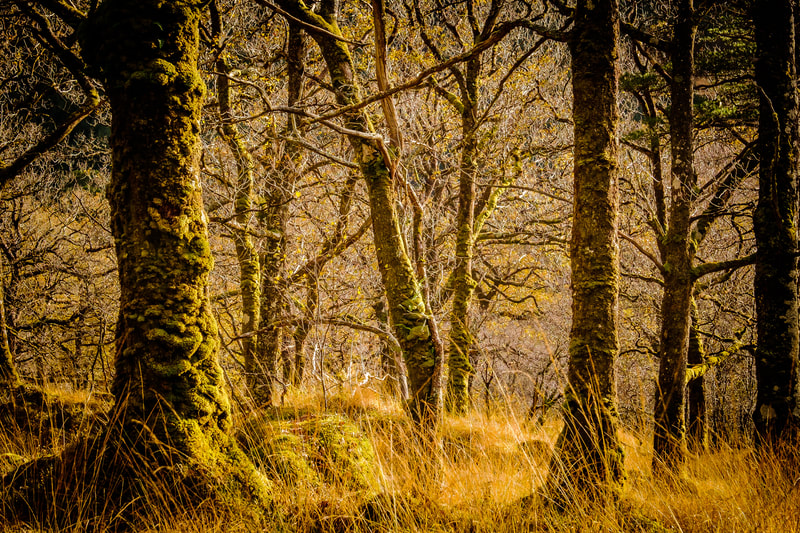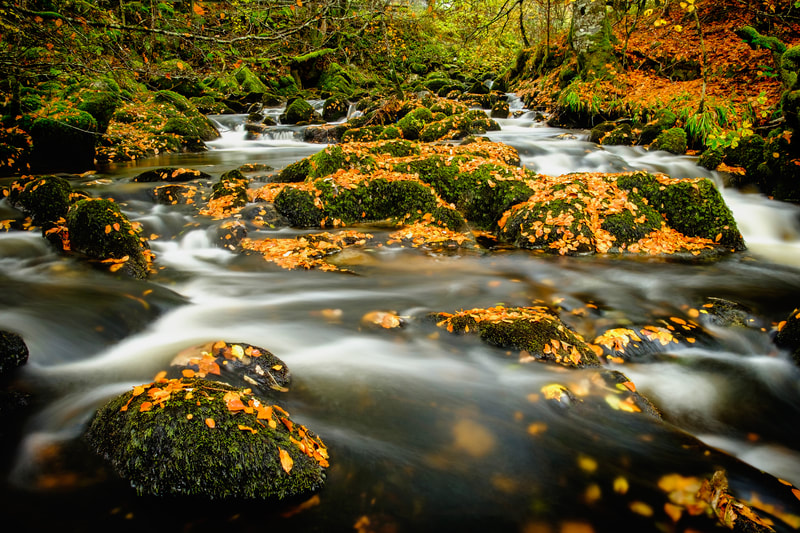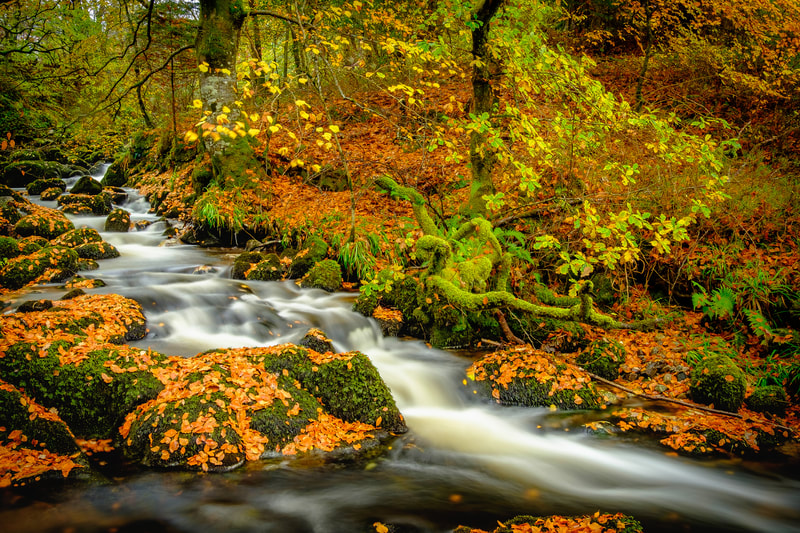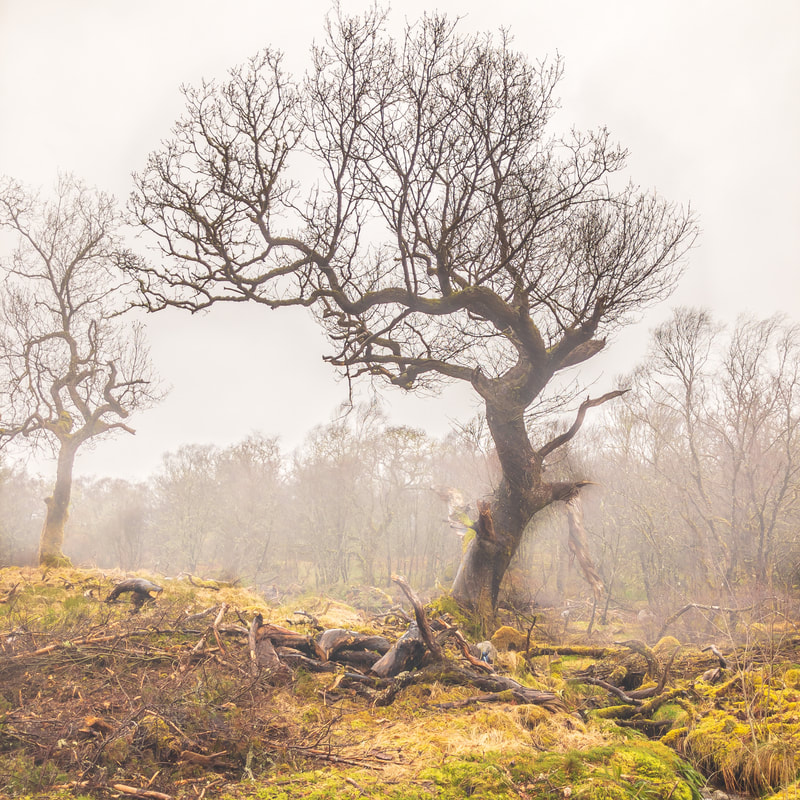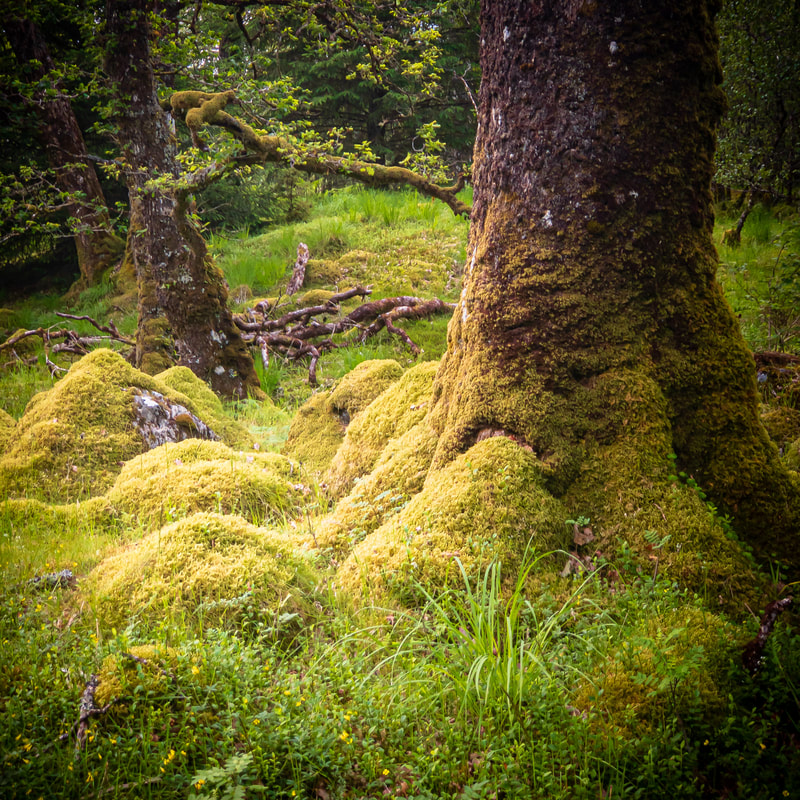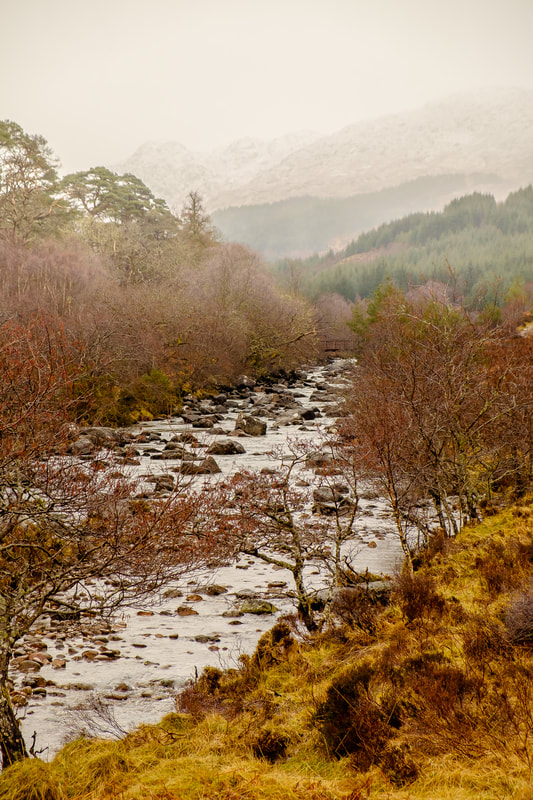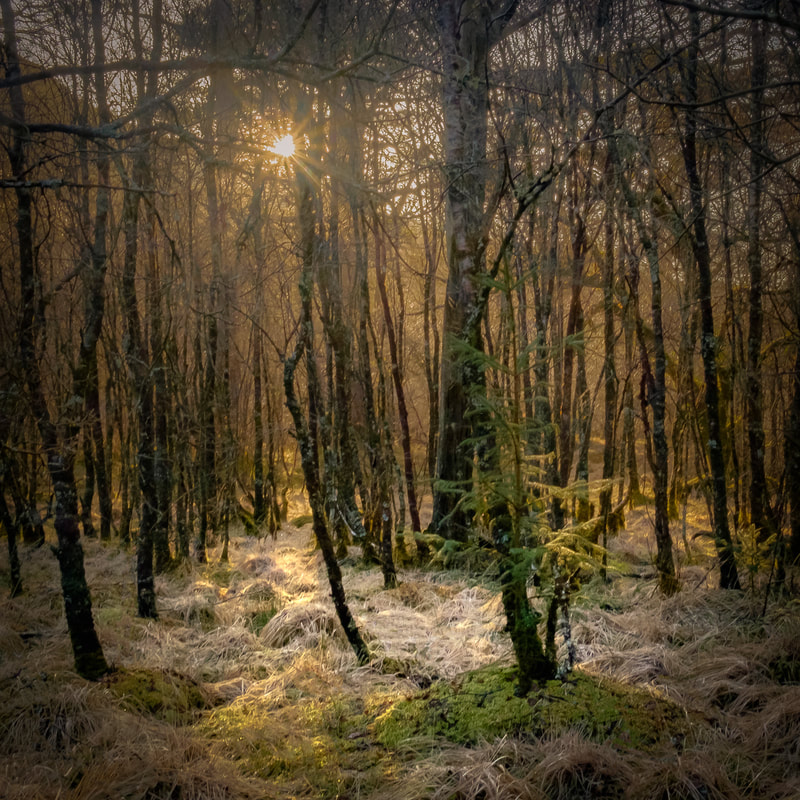|
Have you ever found yourself wandering in a place where you feel as if you are walking a fine line between this world and another? I ask because it is a feeling I often have when walking among the ancient oaks and between the moss-covered boulders of Ariundle Oakwood. I don’t know what it is about the place, but I feel that I am never too far away from the mystical realm inhabited by the faeries that gives the nearby village of Strontian or Sròn an t-Sìthein (nose of the fairy hill) its name. In my mind, it is one of the “thin places” that can be found here on the Peninsula. The concept of “thin places” has been woven into the tapestry of Celtic folklore and spirituality for centuries, being used to describe places where the boundary between the physical world and a mystical, historical or spiritual world is believed to be exceptionally thin, thus facilitating a sense of connection between the two.
In thin places, you might feel a sense of awe and heightened awareness of being in the presence of something greater than yourself and, as such, they are often characterised by an otherworldly atmosphere, where the ordinary and the extraordinary intermingle. This is certainly something I can say about Ariundle Oakwood, a place where each ancient tree and each moss-covered boulder seems to harbour mystical beings waiting to be unveiled. When you stand in a thin place you may instead find your imagination ignited by thoughts of what has been before you. This historical imagination can transport you to a different era, picturing scenes from the past as if they were unfolding right before your eyes. Camas nan Geall is a place where I get this feeling. This “Bay of the Strangers” is a fascinating place because it contains evidence of human presence that covers a period of several millennia of human history. This ranges from a Neolithic chambered cairn to deserted clearance dwellings and includes a number of things in-between. The chambered cairn in the centre of the bay may seem quite innocuous, but when you stand next to it and consider that people buried their dead there some 5000-6000 years before, you cannot help but feel a sense of what has gone before. Perhaps more poignant though, are the ruins of Torr na Mòine up on the slopes of Ben Hiant which was the settlement that was the home to the people of Camas Nan Geall before they were forcibly evicted in the 18th century so that the land could be used for a sheep farm. It’s hard to comprehend the hardship and trauma that these people suffered from being suddenly cleared from their ancestral lands by the landowner for primarily economic reasons. Finally, the Old Parish Church in Kilchoan is a place where I feel that there is a thin veil between our physical world and the spiritual world. It is a hauntingly peaceful place that seems to compel you to tread carefully and with due deference to ground that has played host to a place of worship from some 700 years. Giving Kilchoan its name, this Church of St Comghan must have been incredibly important to the local community as a place where they could come together not only to worship but to also seek fellowship and support. Indeed, a walk around the graveyard that surrounds the church to look at gravestones that date from as far back as the 14th century and as recent as the 1990’s, pays testament to just how long this “thin place” has provided spiritual succour to the community. There are many other places on the Peninsula to which I have felt a sense of the mystical, historical or spiritual and this most likely stems from my photography encouraging me to slow down and take time to get a real sense of a place before I ever think of pressing the shutter button. However, you don’t need a camera to experience the profound ways in which certain locations can inspire feelings of connectivity to a different realm. You can just slow down, look, listen and feel when you next find yourself in a place that you sense you might be connected to.
10 Comments
My seventh Spring of living here on the Peninsulas has come to an end and I find myself reflecting on something that never ceases to mesmerise me during late May and early June each year. It is the sight of the delicate blue coloured, bell-shaped flowers of the bluebell creating intense blankets of colour in the woodlands, on the hillsides and along the verges throughout the length and breadth of the Peninsula. However, are these really bluebells I am seeing in this incredible wildflower spectacle, or are they something else? Well, it seems that these little plants that spend most of the year as bulbs underground in our woodlands and hillsides, are what botanists call ‘wood hyacinths’ or “Hyacinthoides con-scripta” and have been given the common name of “English Bluebell” because their flowers are indeed blue, and they are indeed shaped like a bell. What about the Scottish Bluebell though? Well, do you remember Scottish Bluebell Matches and the delicate blue and bell-shaped flowers on the matchbox? These are completely different from the “blue bells” on the plants in our woodlands. They are in fact “Campanula rotundifolia”, a creeping, rooted perennial that flowers from July to September and more commonly known as the Harebell. It favours dry, grassy places, so you will find it in the dry land around our sandy beaches as opposed to in our damp, shady woodlands. Many English Bluebell tales involve dark fairy magic with bluebell woods being portrayed as scary, forbidding places that should be avoided. For example, if you do enter a bluebell wood, you should never pick or step on a bluebell for fear of breaking a spell that a faerie has hung on one of the flowers. If you do break a faerie spell, they will get extremely upset, seek you out and enchant you in such a way that you would be drawn further into the woods to wander lost for evermore. Folklore says that you also need to be careful with the Scottish Bluebell because its common name is rooted in magic. Some say that the name “Harebell” was given to the flower because witches would turn themselves into hares and hide among them. It may also be the reason why the names Witch's Thimbles and Witch Bells were used for the flowers.
So, there you have it. Hyacinths or Harebells? English Bluebells and Scottish Bluebells? Different plants linked by a common name and a whole lot of myth and legend, both of which you should not damage for fear of being visited by angry faeries, witches or indeed, the Aul’ Man himself.
May is probably the month of the year that I look forward to most because it is the month in which the landscape well and truly awakens from its winter slumber. The dawn chorus fills the early morning air with birdsong, spring flowers cover the ground with a multitude of bright colours and trees burst with new leaves to create beautiful and vibrant sights in our woodlands. So, on bright May mornings while walking at Sàilean nan Cuileag near Salen and Phemie’s Walk near Strontian, I was compelled to capture the scenes shown in the images below because the fresh, bright green colour of the grass on the ground and the leaves on the trees was such a beautiful and vibrant sight. This ‘spring green’ colour is such a potent sign of new life and renewal. So much so, that it’s little wonder that Beltane, an ancient Celtic festival celebrating joy, renewal, and community falls on the first day of May. Beltane marks the beginning of summer in the Northern Hemisphere and is considered one of the four major seasonal Celtic festivals along with Samhain, Imbolc, and Lughnasadh. As well as joy and renewal, Beltane is often associated with fertility, abundance, and growth, and has been celebrated for centuries with feasting, dancing, and bonfires. In ancient times, bonfires would be lit on hilltops to honour the sun and promote fertility. The bonfire would be the centrepiece of the Beltane celebrations, symbolising the return of the sun and the warmth of summer. It was also believed to have protective and purifying powers, and people would jump over the flames or pass through them as a form of ritual cleansing and purification. They would also drive their livestock between the fires, believing that the smoke and ashes would protect them from disease and bring fertility to the animals.
I grew up in a large council estate called Burnfoot. It was built between the 1950s and 1970s and, in the early part of these years, a group of local people decided to revive the Beltane traditions and create a festival that would celebrate community and bring the people of this new housing estate together. Central to the festival was the crowning of a local girl as the Burnfoot Queen who, like the May Queens of the past, was chosen for her character and community spirit, and was considered to be a role model for other young people living on the estate.
I remember the crowning ceremony to be a big occasion. It was attended by a large crowd of locals and visitors and once it had taken place, there would be procession through the estate, with the Burnfoot Queen at its head, on an elaborately decorated float. To the small boy that I was, the parade was a colourful and lively event, featuring floats and displays from local businesses and organisations. So much so, that it would bring together people of all ages and backgrounds to celebrate what was known as the Burnfoot Festival and ultimately the community of Burnfoot. As far as I’m aware, this Festival still takes place and I find it fascinating how this event from my distant childhood memories was a revival of Beltane traditions that can be traced back to pre-Christian times in Scotland. I would never have thought that a seemingly innocuous slip on a wet rock at Ardtoe would have resulted in a debilitating injury requiring surgery, 4 months of immobilisation, 12 months of physiotherapy and a further 6-12 months of recovery time to get me back to a point where I can freely walk in and photograph the landscape here on the Peninsula. However, this was indeed the case, and I am thankful that I had my photography to use as the motivator to get active and aid my recovery. It also resulted in the creation of a collection of 72 images that portray the varying landscape and moods of the Peninsula throughout 2022. This blog contains 12 of these images, one for each month of the year, and I hope to share the remainder of them over the course of 2023. The BackstoryOn 6th July 2021, I slipped on some wet rocks at Ardtoe, dislocating my knee and tearing my patellar tendon in two. Following an operation to repair the damage, I found myself immobilised and in a knee brace until early November and unable to get out and do any photography. While laid up in the brace, I set myself the target of getting back out with the camera by the start of 2022 and the objective of taking 5 or 6 images each month that captured the varying landscape and moods of the Peninsula throughout the year. With limited mobility, especially at the start of the year, I had to think carefully about locations I could safely go that would provide me with opportunities to take the photographs that I had in mind. This was a bit of a challenge at first, but I found that this limitation helped me with my creativity. By the end of the year, I had visited enough locations and taken enough photographs to enable me to create a collection of 72 images, or six for each month to reasonably portray the Peninsula over the course of 2022. Twelve of these images, one for each month, are presented in this blog and I plan to share the rest of them over the course of the coming year in a new section on this website titled “A Year on the Peninsula”. As well as the collection of images, the project provided me with the motivation to get “out there” and get back into my photography and aid my recovery. When pulling these images together, I was certainly reminded of how far I have come since that day in January when I gingerly made my way down the jetty at Salen with the help of a crutch to take the first photograph in this collection. I still have a number of months left in my 18-24 month long recovery period and hopefully, as my ability to walk on uneven ground and also downhill improves, I’ll be able to range further afield and photograph locations that I have not been able to get to since that fateful day in July 2021. The ImagesAnticipation I - Loch Sunart, Salen Jetty, Ardnamurchan
I started the year with some early morning visits to the old jetty in Salen because in January, the sun rises well round to the south-east and is able to cast beautiful light and colours onto the waters of the bay and the jetty itself. On my final morning, the sun seemed to take an age to appear from behind the hills of Morvern, but it was well worth the wait. Distant Lighthouse I - Port na Carraidh, Ardnamurchan
Mid-February brought Storm Eunice along with its record-breaking winds and widespread disruption. The day after the Storm had passed, I headed out to Port na Carraidh at the western end of the Peninsula with the aim of photographing a distant view of the Lighthouse and after much searching I settled on this composition that used the stream on the sandy beach to lead the eye out to it. Tioram and the Zodiac - Castle Tioram, Dorlin, Moidart
In March, the Zodiac rises steeply from the horizon at dusk, making it a great time for spotting Zodiacal Light. Caused by light from the sun reflecting off a fog of tiny interplanetary dust particles that fill our inner Solar System, it shows as a faint triangular glow rising steeply from the western horizon just like in this image I took at Castle Tioram. Light on Risga - Loch Sunart, Glenborrodale, Ardnamurchan
This shot was taken on an April morning when I was driving back home from an overnight photo session out west. As I approached Glenborrodale, the first light of the day was falling on the island of Risga, the skerries around it and Carna behind it. A sight that was simply too beautiful to not stop and photograph. Caisteal nan Con I - Bagh Caisteal, Killundine, Morvern
Caisteal nan Con (Castle of Dogs), overlooks the Sound of Mull on the eastern coast of Morvern. I have passed it a few times on trips out to Drimnin and it has always caught my eye, so I decided to stop when passing it late on an evening in May and photograph just as cloud was rolling in from the west and catching the pinks from a setting sun. Day's End, Land's End - Ardnamurchan Lighthouse, Ardnamurchan
Three days after the longest day of the year, in late June, I was out at the lighthouse for its 25th anniversary of community ownership. The day had started with wind and rain but the afternoon cleared and I decided to capture the day’s end a good few hours after the anniversary celebrations ended. The sun set in the northwest shortly after 10:00 pm. Sundown Blues II - Sailean Dubh, Ardtoe, Ardnamurchan
A “must do” thing to do in July is to watch the sun set directly behind the Small Isles of Eigg and Rùm from the headland on the western side of the beach at Ardtoe. I had spent a very peaceful time doing just that in the couple of hours before I took this image of the blues of the emerging blue hour mixing with the golds of sunset. Return of the Stars - The House Pool, River Shiel, Blain, Moidart
In August, the lengthening nights mean the return of stars and up until early October, you can marvel at the sight of the Milky Way filling the sky with a cloudy band of stars. This image shows it soaring above the House Pool on the River Shiel on a night in late August when I must have seen around a dozen shooting stars from the Perseid meteor shower. Harvest Moon Reflections - Ardtoe Pier, Kentra Bay, Ardnamurchan
In September, the full Moon rises in the southeast and if you watch it from Ardtoe Pier at the western end of Kentra Bay, it will appear above a distant Ben Resipole and cast reflections onto the water in the bay as it does so. In 2022, it was the nearest full Moon to the autumnal equinox, earning it the title of 'Harvest Moon'. Lilac Dawn - Loch a' Choire, Kingairloch, Ardgour
Loch a’ Choire is at the heart of Kingairloch Estate and in October the Sun rises in line with its east facing entrance and can create some beautifully vibrant sunrises there. I had hoped to capture one of these sunrises on the morning I was there, but haze and cloud on the horizon subdued it and instead created some lovely lilac hues on the loch’s surface and in the sky above it. Two Bridges - River Shiel, Blain, Moidart
The 2.5-mile-long River Shiel flows from Loch Shiel to the sea and forms part of the boundary between Moidart and Ardnamurchan. It can be crossed by either of the two bridges shown in this image which was taken on a November afternoon when the light bathed the autumn-coloured trees on the Moidart side it. Ben Resipole can be seen in the distance. A Year Ends - Kentra Bay, Gobshealach, Ardnamurchan
Early December brought clear blue skies and sub-zero temperatures which were followed by two weeks of milder weather, wind and heavy rain. Fortunately, this broke for a little while on New Year’s Eve to allow me to capture dusk falling on the mouth of Kentra Bay as the end of the year approached. The Small Isles of Muck, Eigg and Rùm are in the orange glow on the horizon. With its ever-changing weather, dramatic landscapes, beautiful lochs and ancient woodlands, the Peninsula often seems to be a magical and mystical place to me and like much of Scotland, legendary stories used to explain the unexplainable and to warn us away from dangerous places, have been carried down through the generations. Indeed, photographing the Peninsula often leads me to uncovering links between legends and its landscape, just as it did when I photographed Loch Sunart one November day. The image above was captured from the upper slopes of Meall Mor, a small peak that sits on the western flank of Ben Resipole. I have been up there many times because it is only a short distance from my house and the modest climb is rewarded with stunning views westwards over Loch Sunart to the Isle of Carna and the hills of Morvern beyond. While taking this photograph, I saw something that I hadn’t noticed before. A small promontory sitting in front of the silhouette of the Isle of Carna, which only caught my eye because it was lit up by rays of light that had broken through the clouds. Curious as to what it was, I did a bit of research when I returned home to find out that this knoll was both the site of a small Iron Age fort called Dùn Ghallain (Fort of the Storm) and the setting of ‘The Swan of Salen’, a mythical tale that seeks to explain why no swans are found on Loch Sunart. It tells of a Chieftain who fell in love with a maiden of low social status. The Chieftain’s mother disapproved of the match and turned the maiden into a swan. The Chieftain, not knowing this, killed the swan while out hunting and was heartbroken to see the swan’s body take the form of his love as it died. Inconsolable, he fell on his own sword, and the bodies of the two are said to lie beneath Dùn Ghallain to this day. It is said that this is why there are no swans on Loch Sunart, making it the perfect example of a tale to explain the unexplainable. If you travel a few miles east from there, you can find a location whose name is linked to a legend that warns you away from danger. It is Lochan nan Dunaich, the ‘Little Loch of Sadness’, where young children were supposedly lured into its waters by a Kelpie and never seen again. Kelpies are said to be water spirits that inhabit many of the rivers and lochs of Scotland. Although usually appearing in the form of a horse, they are capable of shape-shifting and can take human-form. When in horse form a kelpie will often stand near the edge of a river or loch waiting for its prey, which will often be young children. Kelpies have magically adhesive bodies, meaning that should a child choose to clap the supposed horse, they will become attached, allowing the Kelpie to drag its victim into the water and drown them.
It is also said that they can stretch the length of their backs to carry several children to their death at once. One tale involves a group of children, where all but one climbed onto the kelpie’s back while the last child stayed on the shore. This child petted the kelpie’s neck only to have their hand become attached to it. They freed themselves by cutting off the hand only to then watch their friends, who were stuck to the kelpie’s back, being dragged down into the depths of the water where they were devoured, and their entrails thrown to the water’s edge. When you look at Lochan nan Dunaich, a deep and dark pool of water with fallen trees around its boggy edges, you can well understand the need to warn children away from straying too close to it and with such gruesome tales about Kelpies, you can well understand how the local legend would have been to this effect. So, if you find yourself there, tread carefully, very carefully indeed. We are now in May, the last month of Spring and the landscape has well and truly awakened from its winter slumber. The leaves have unfurled on the trees, the wildlife is thriving, and the colourful blooms have appeared. We’ve seen snowdrops in February, wood anemones in March, primroses in April and now it’s time for the carpets of bluebells to appear in the ancient woodlands across the Peninsula. This wildflower spectacle is a magical sight and one that leaves you with a feeling that these woodlands with carpets of blue are indeed enchanted. In Celtic folklore, bluebells have a strong association with spirits and faeries. They are often called faerie flowers and their small bell-shaped flowers are believed summon the faeries when rung. This is not necessarily a good thing because faeries are believed to hang their spells on the bluebells to dry and disturbing them may unleash wild magic upon you, leaving you dazed by enchantment and unable to find your way out of the woods. It can be even more serious for children who pick bluebells because it is believed that they could be snatched away by the faerie folk, never to be seen again.
So, if you do visit a bluebell wood, just remember to stay on the path and to not pick or disturb any of the flowers. Besides risking the wrath of the faeries, another good reason to avoid disturbing them is that they are poisonous, and this might be the reason why there are so many old tales and legends warning people away from them. However, these beautiful little flowers have also been valued for their useful properties and have been used over the centuries by herbalists to prevent nightmares and to treat leprosy, spider bites and tuberculosis. They contain at least 15 biologically active compounds that provide them with protection against insect and animal pests and in recent years, some of these compounds have been investigated as possible treatments for HIV infection and cancer. Bluebells have practical uses as well. They produce an exceptionally sticky sap which was used by our Bronze Age ancestors to make a glue that they use for attaching flights of feathers to their arrows. This glue has also been used for several centuries by bookbinders to make and repair books, while in Tudor times, starch was extracted from crushed bluebell roots and used to stiffen the ruff collars that were very much the fashion back then. Finally, some bluebell folklore gives a positive impression of this beautiful little flower. For example, some believe that by wearing a wreath made of the flowers, the wearer can be compelled to speak only truth while others believe that if you can turn one of the flowers inside out without tearing it, you will eventually win the one you love. As we move away from the Autumn Equinox and towards the Winter Solstice it seems to me that, along with the days getting shorter and colder, the evening skies are getting brighter and bolder. We often get brooding skies, with the oranges, pinks and reds from the setting sun breaking up the greys, blues and purples of clearing storm clouds to produce dramatic scenes such as one I witnessed at Castle Tioram on a late-November afternoon and shown the image below. This makes me beg the question: Are late autumn and winter sunsets better than those we get at other times of the year? Well, it turns out that scientific studies have confirmed this to be the case and they have discovered the reasons why Scientific researchers have found that the peak sunset season is from November through to February and that this is down to a combination three things. These are the type and quantity of the cloud cover, cooler air temperatures and how the Earth is tilted towards the sun at this time of the year. Contrary to what you might think, we need clouds for a good sunset and they have to be the right kind of clouds. If they are too low down on the horizon, they will block out the Sun’s rays and prevent a sunset. Instead, we need mid to high level clouds that will refract the sunlight and give us those beautiful sunset colours. This happens more in autumn and winter because the weather patterns we get then tend to bring mid and high-level altocumulus, altostratus and cirrus clouds. The cooler temperatures mean that the air is less humid and that there is less water vapour to capture dust particles that are in the air and create the haze which is often a feature of the summer months. When present, this haze scatters sunlight and reduces its intensity. So, in autumn and winter, the lower humidity means that the air is clearer and we see the colours produced by the setting sun in all their intensity. Finally, as we approach the winter solstice, the North Pole gets tilted further away from the sun, lengthening the time taken for the sun to set. This, in turn, means that the sunset colours last longer than at the equinoxes, for example, when the sun sinks very quickly towards the horizon at a 90-degree angle. The result is that we have more time to enjoy the sunset colours and the sunset colours have more time to make an impact on us. Despite all of these variables, predicting sunsets doesn’t have to be hard. All you need to do is keep an eye out for the following key indicators:
Mid to high-level clouds (2km and above) Cloud coverage - 30 to 70 percent Humidity - low but not too low Clean air Prior rainfall - no less than 2 to 6 hours before Wind speed - low or non-existent There are many online forecasts for these weather conditions and the one I refer to most is windy.com. So why don’t you have a go at predicting a sunset and head west at what you think might be a good time. You never know, you may be well rewarded for your efforts! Depending on your point of view, Autumn either starts on 1 September (meteorological autumn) or on the 23 September (astronomical autumn). The latter is when the Autumnal Equinox takes place and is when day and night are of equal length and when the Sun rises due east and sets due west. Although this means that the dark nights return, it does mark the beginning of the beautiful sunsets over Loch Sunart that we get here at Resipole during the autumn and winter months and also increased chances of seeing the Aurora Borealis. Most people know that the Sun rises in the east and sets in the west, but they may not realise that this is quite a generalisation. In fact, the Sun only rises due east and only sets due west on two days of the year; the days of the Spring Equinox and the Autumnal Equinox which, for 2021, are March 20 and September 22. To illustrate this, Figures 1 and 2 show the location of the rising and setting sun at the Spring Equinox and Autumnal Equinox, respectively. Once it has risen due east and set due west at the Autumnal Equinox (Figure 2), the Sun rises and sets a tiny bit further south each day until the Winter Solstice, the day on which it rises as far to the southeast as it ever does and sets as far to the southwest as it ever does (See Figure 4). It then changes direction and begins moving north each day, eventually rising due east and setting due west on the Spring Equinox (Figure 1) before continuing northwards until the Summer Solstice, when it rises as far to the northeast as it ever does and sets as far to the northwest as it ever does (Figure 3). Once it has risen due east and set due west at the Autumnal Equinox (Figure 2), the Sun rises and sets a tiny bit further south each day until the Winter Solstice, the day on which it rises as far to the southeast as it ever does and sets as far to the southwest as it ever does (See Figure 4). It then changes direction and begins moving north each day, eventually rising due east and setting due west on the Spring Equinox (Figure 1) before continuing northwards until the Summer Solstice, when it rises as far to the northeast as it ever does and sets as far to the northwest as it ever does (Figure 3). Image 1, at the top of this blog, was taken at Resipole during sunset on the day after the Autumnal Equinox of 2019, with the camera facing southwest down Loch Sunart towards the Isle of Carna and the hills of Morvern. If you look closely, you can see a patch of intense colour behind the wooded hillside on the right-hand side of the image. This was the spot where the sun was setting due west and for me, such a sight is one of the most welcome of the year because it marks the return of spectacular sunsets to this part of the Loch. With the passing of the autumn months and the movement of the setting sun towards the south, these sunsets become more and more intense. They are something that I’ll never tire of photographing even though I have taken countless photos of them from this spot. I can honestly say that I’ve never seen the same mix of colours twice. Each sunset is different because of the varying position of the sun and the infinite range of possible cloud formations that reflect the light from the sun and produce the kaleidoscope of colours. The Autumnal Equinox also paves the way for increased chances to see aurora borealis displays. According to NASA, the equinoxes are prime time for Northern Lights, because the geomagnetic activity that causes them is more likely to take place in the spring and autumn than in the summer or winter. In addition, we tend to have more clear nights in spring and autumn so this, combined with more geomagnetic activity, may be the reason why I tend to have captured most of my Northern Light images in September/October and March/April. Image 2 above was taken 4 days after the Autumnal Equinox of 2019, when I had a client out with me for some night photography tuition. We had spent the first part of the night preparing for and taking photographs of the Milky Way rising above Loch Sunart and while we were doing this a very high Aurora Alert came through on my phone. We quickly packed up our camera gear and headed up to Acharacle and set it up again on the jetty there is on Loch Shiel. It is a perfect spot to look for and photograph the Aurora Borealis because it faces directly towards northern horizon that has only a few distant and low-lying hills on it, meaning that the view north is clear of any obstructions. We had a very productive time there and also at another couple of locations nearby and came away with some great shots of the “Merry Dancers”.
Finally, although the equinox referred to as a day by many people, it is actually the exact moment in time when the tilt of the Earth’s axis and Earth’s orbit around the sun combine in such a way that the axis is inclined neither away from nor toward the sun. For 2021, the Autumnal Equinox will be at 8:21 pm on Wednesday 22 September and the Spring Equinox was at 9:37 am on Saturday 20 March. I took the following photograph on a late winter afternoon as light fell on some of the hundreds of moss-covered boulders that lie amongst the trees in Ariundle Oakwood near Strontian and couldn’t help being reminded of the faerie mounds where the sídhe are said to live. Read on to find out more about these mythological creatures…. What’s in a Name? If you take a walk through Ariundle Oakwood, you’ll see a woodland floor covered with hundreds of moss-covered boulders which, with a little bit of imagination, could be mistaken for mounds that are home to the mythological sídhe, a supernatural race comparable to the faeries or elves. Indeed, the nearby village of Strontian got its name because of the faeries. In Scottish Gaelic, it is called Sròn an t-Sìthein, which translates as the ‘nose of the fairy hill’ and means a knoll or low round hill inhabited by the sídhe.
Going back to Strontian, or Sròn an t-Sìthein, the term sìthein (pronounced shee-an) often referred to small conical hills with hollow interiors containing an invisible world within which it was believed that faeries coexisted with the world of humans. They were thought to have had a huge influence on how successful the annual harvest would be and if a crop failed it was sometimes thought that someone had violated or upset them. So, before you decide to go walking in the fields or forests by yourself, it is perhaps best if you know a little bit about the various faeries, their significance and how not to upset them. Respect, Honesty and No Green Most important of all is to never let a faerie overhear you calling them faeries as they do not like this. They prefer to be called ‘fair folk’ and are very sensitive creatures, so do not be rude, or you might suffer the consequences. Also, you should always be honest with a faerie as they will know if you have lied to them, and not surprisingly, they don’t take kindly to that either. Finally, wearing the colour ‘green’, is also not advisable, as faeries see this as a colour that belongs to them. There are many different kinds of fairies. Some take on human form, some take the form of creatures, some can fly, and all can appear and disappear at will. Some will fool you with comical antics, some will lure you with beauty and some will just plainly let you know how they feel about a human intrusion. Coming across ‘fair folk’ like Buachailleen, Brownies, Gnomes, the Gruagach, Heather Pixies, Pixies and Seelie Courts can be a very rewarding and magical experience, as most of these faeries enjoy being mischievous, shy and friendly. The same cannot be said for the Ghillie Dhu, Kelpies, Nucklelavees or Fachans. Most of these faeries dislike humans intensely and an encounter with one of them folk could end badly for you. In particular, make sure you avoid the Black Angus or Cù-sìth, which means "faery dog". If this large black dog with yellow eyes and sharp fangs shows itself to you, the legend says that you will die in a fortnight. Belief in the ‘fair folk’ continues to this day, with stories being told in the early twentieth century of unwary humans being lured inside the sìthein at night, only to emerge the following morning and discover that decades had passed in the outside world. Other tales detail the abduction of unbaptised babies, or doomed romances with the fairy folk, and the various ills which befell those who dared to refuse them hospitality. Even as recently as January this year (2020), plans for a fish farm in Loch Pooltiel off the north-west coast of Skye were rejected after campaigners warned that fishermen could be lured to their deaths by Ashrays. Also known as Asrais, these faeries are completely translucent water creatures and are often mistaken for sea ghosts. A group of campaigners called Friends of the Eilean Fhlodaigearraidh Faeries warned that workers' lives could be put at risk by the creatures, who could 'lure them with promises of gold and jewels into the deepest part of the ocean'. It’s not all bad though, because as long as you respect the faeries and stick to the rules how not to upset them, then you should be safe on your walk through the oakwoods. Remember to call them ‘fair folk’, do not be rude or dishonest and finally, don’t wear green. Images of SunartYou will find other images of Ariundle Oakwood and the wider area of Sunart in the Images of Sunart gallery on this website. If you’d like a print of any one of them, please feel free to get in touch. Also get in touch if you’d like to arrange some photography tuition.
|
AuthorHi, Archives
April 2024
Categories
All
|

